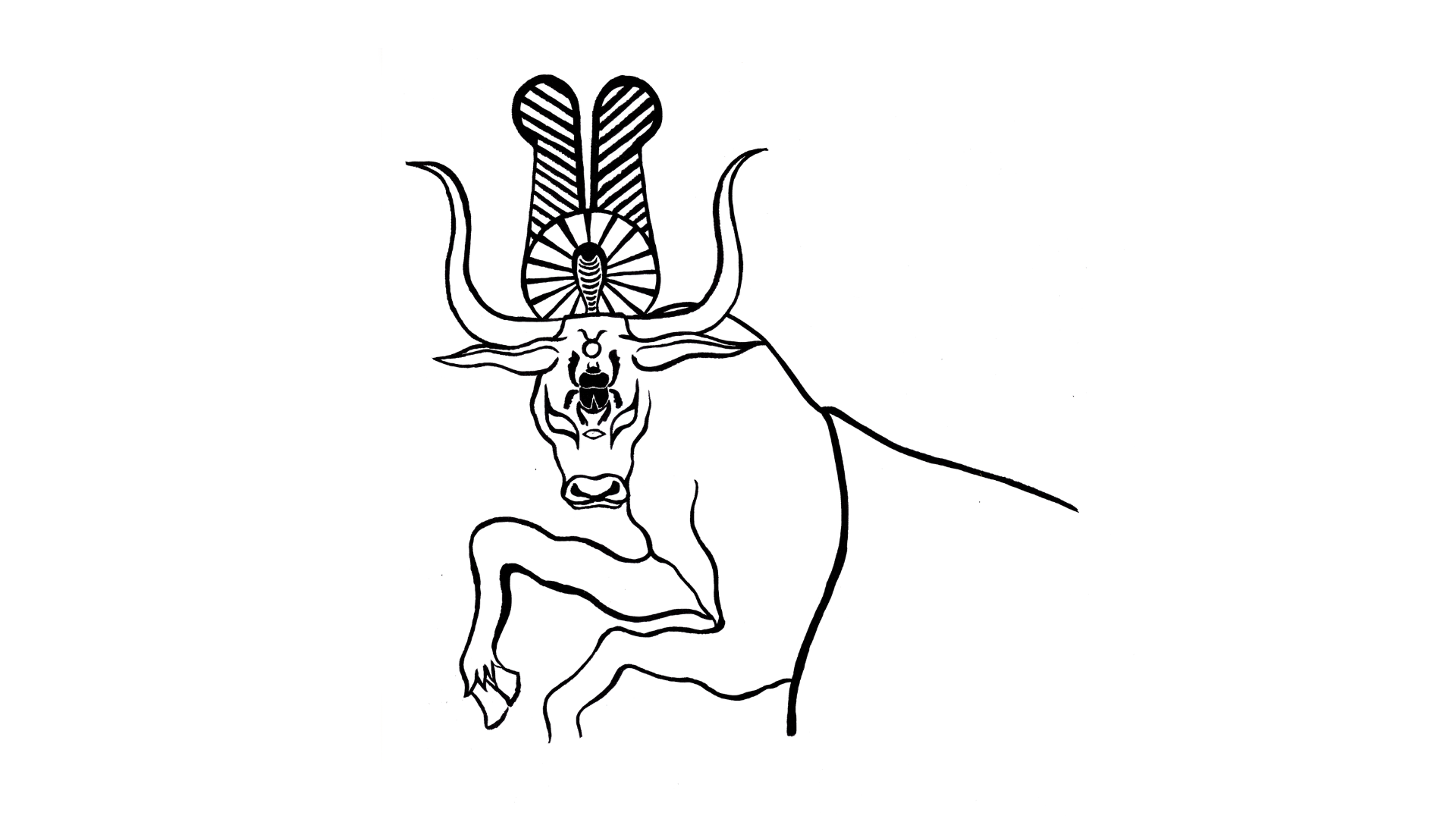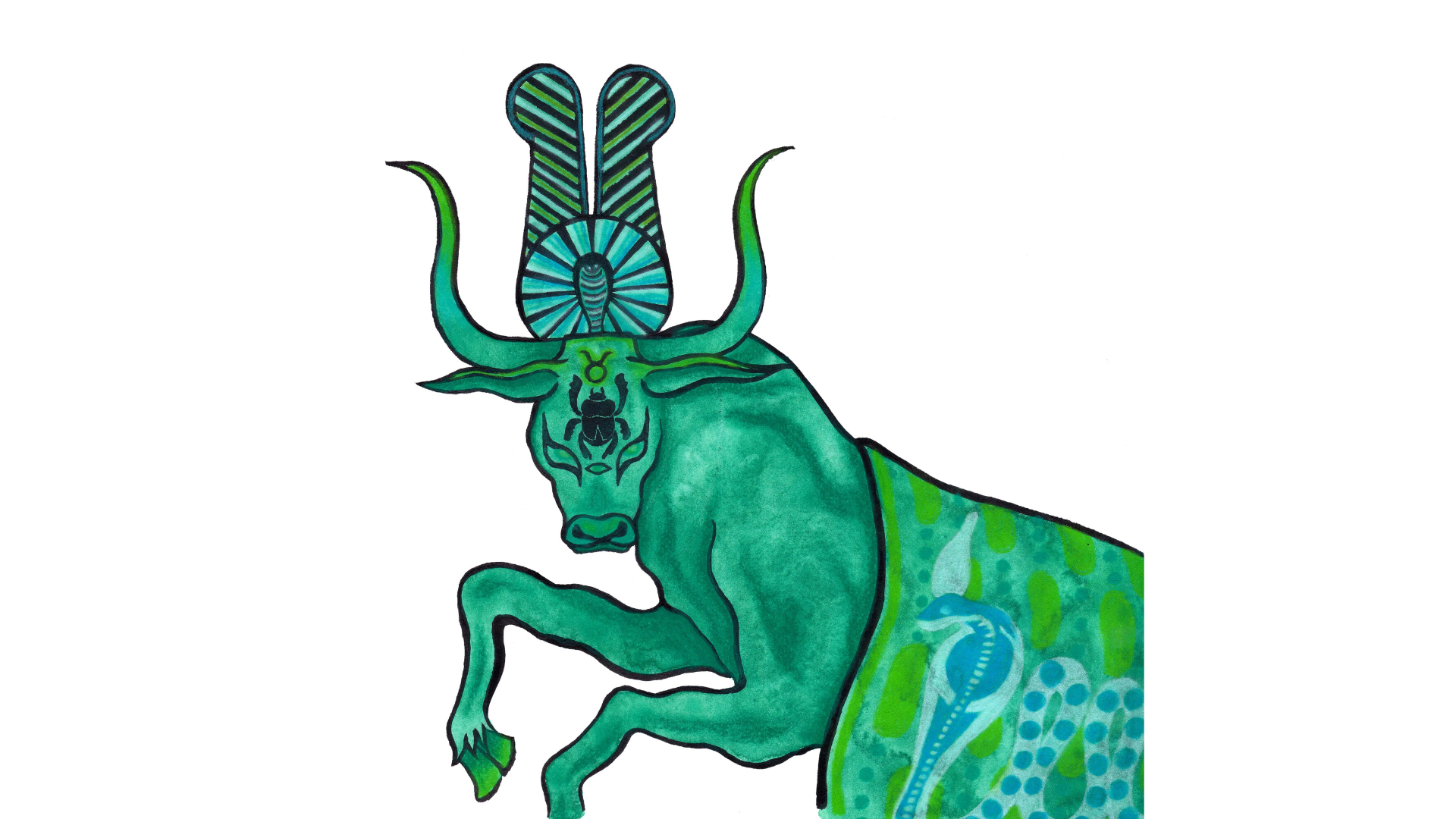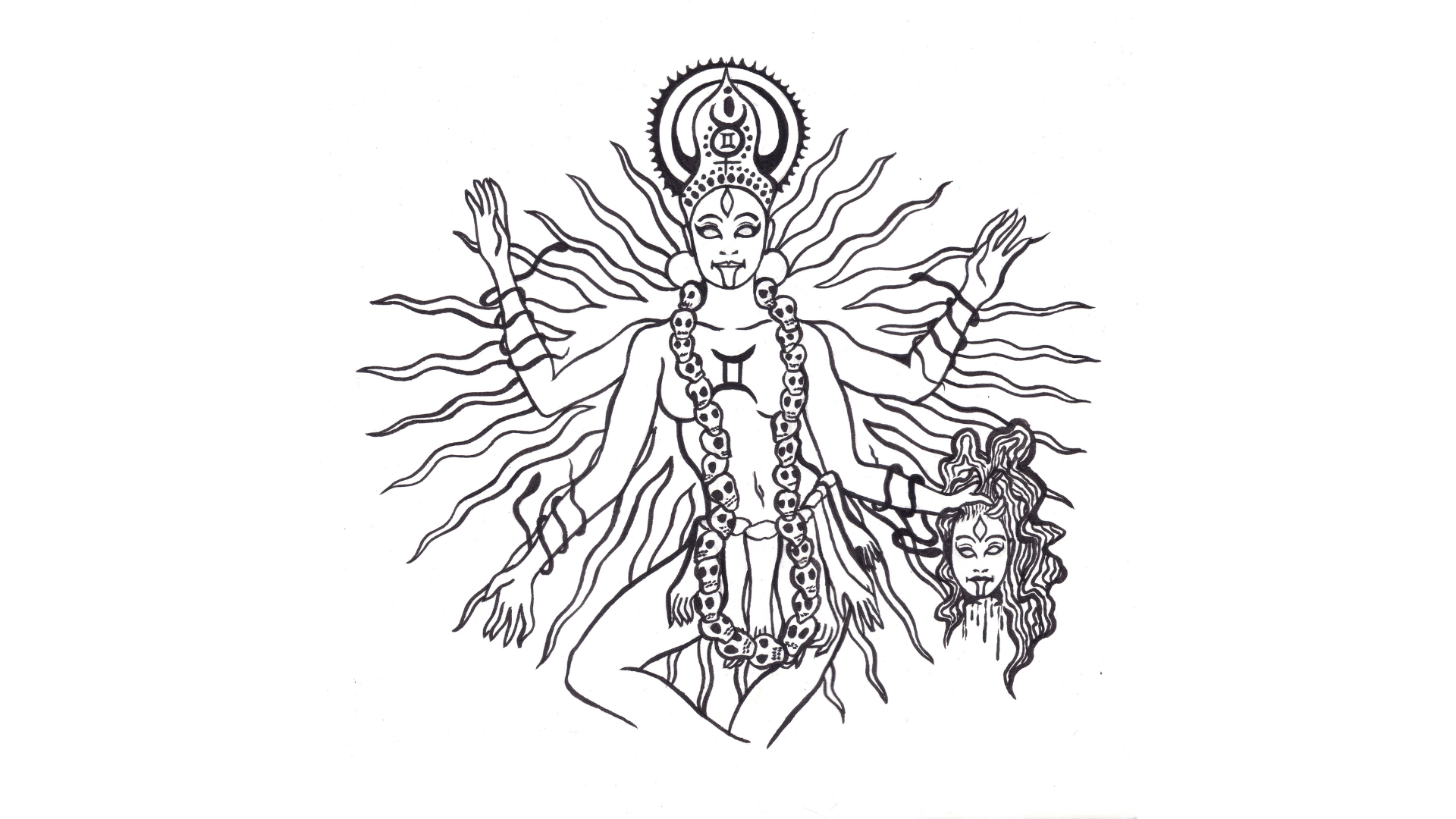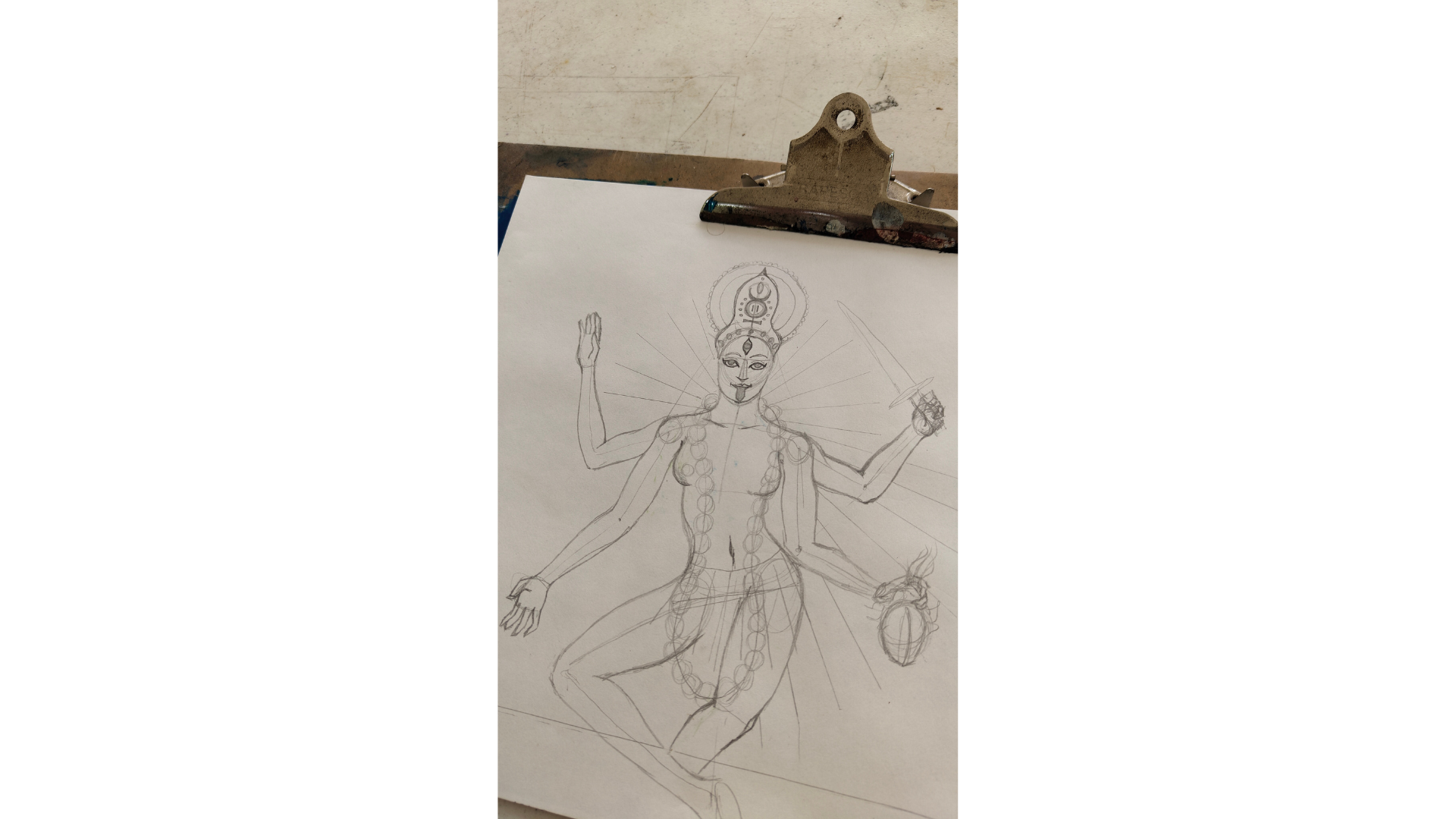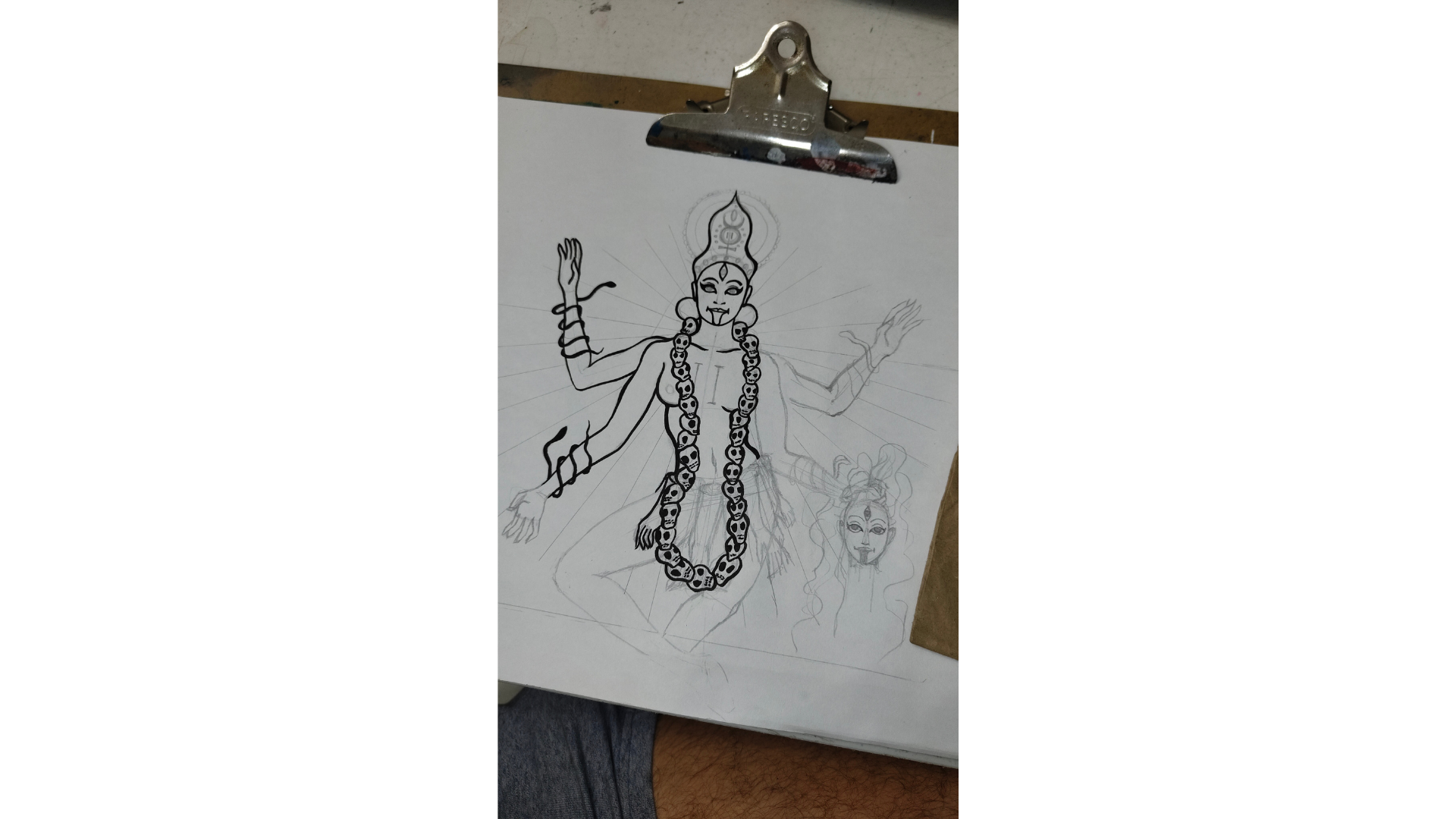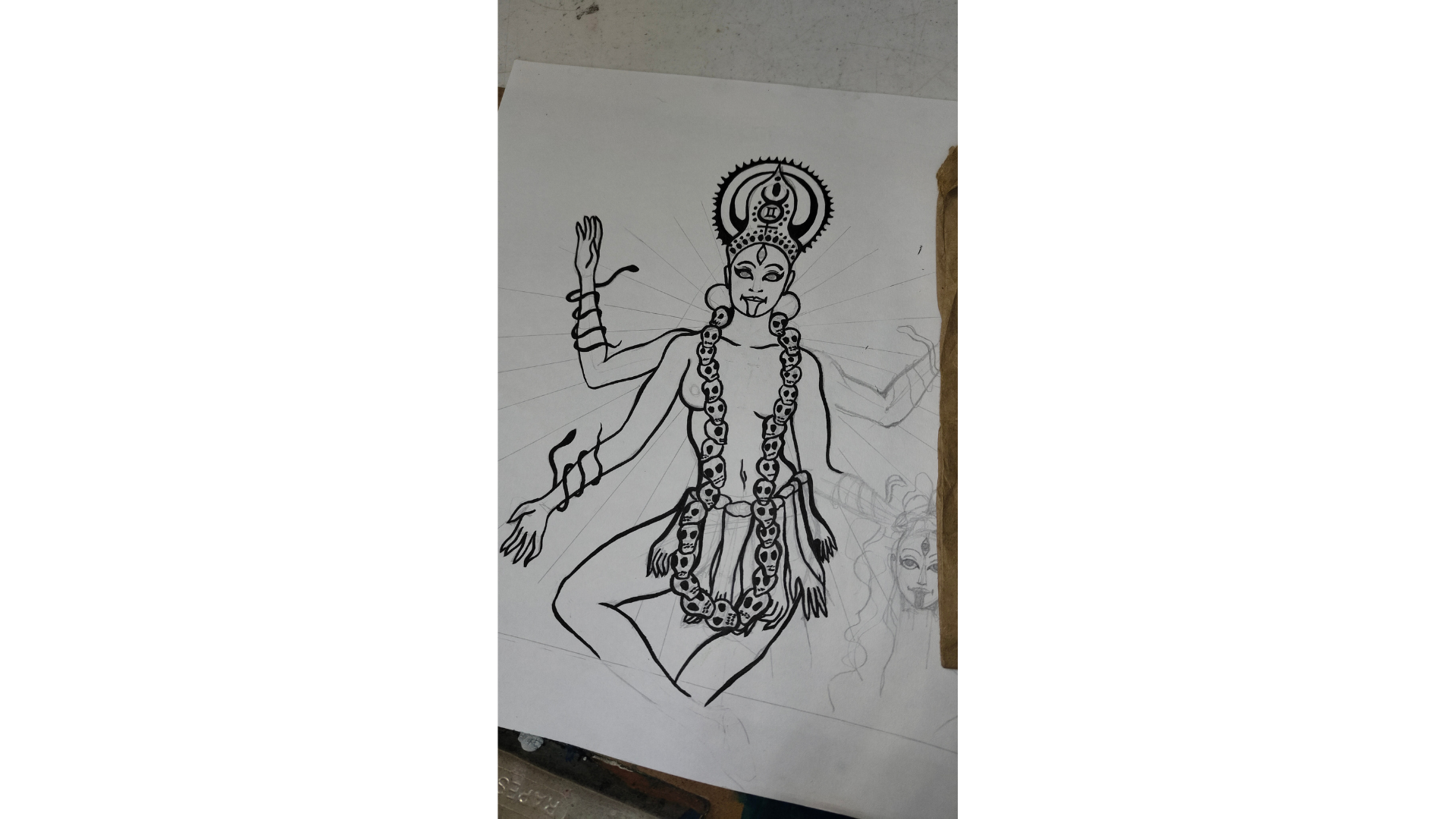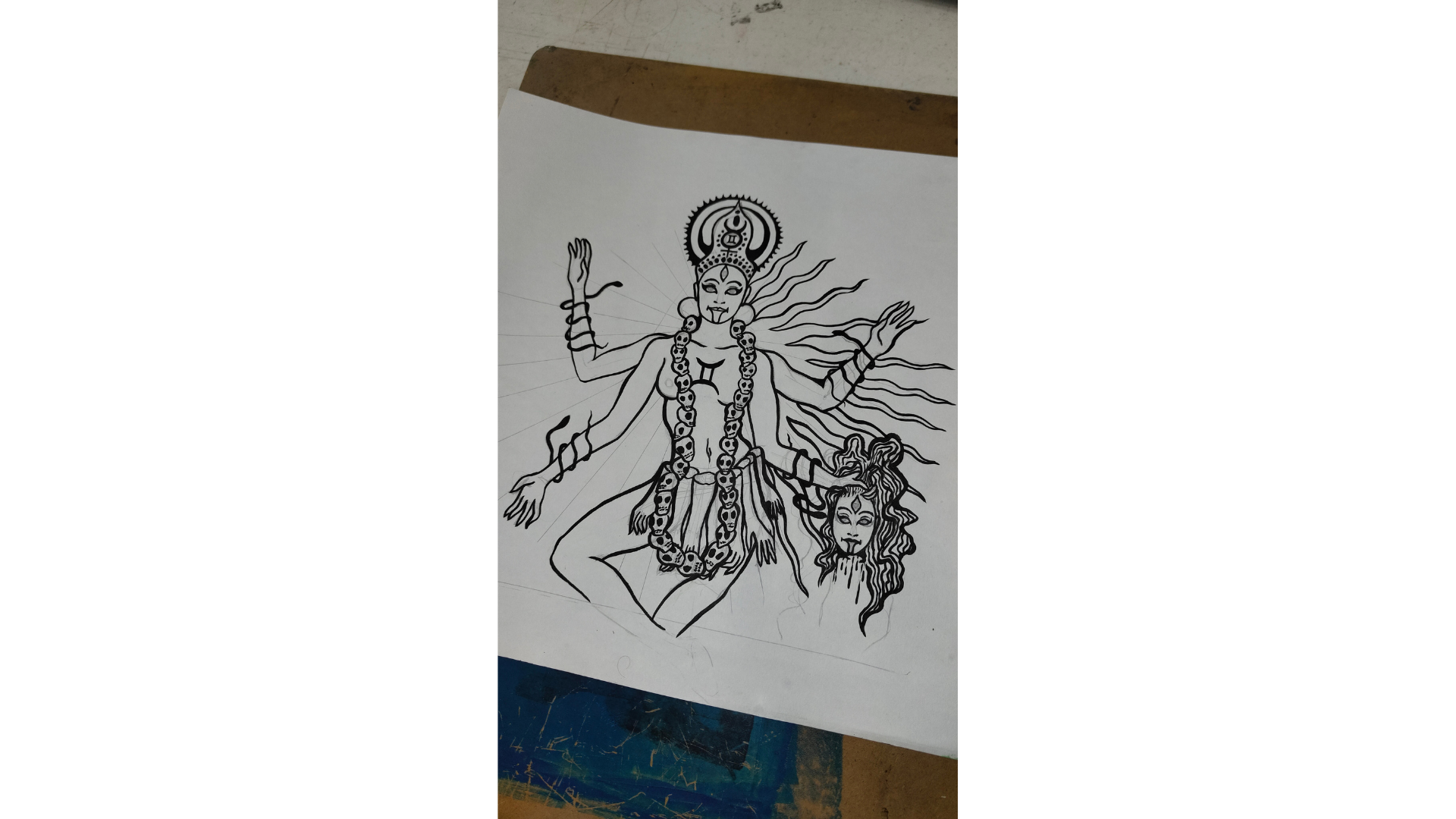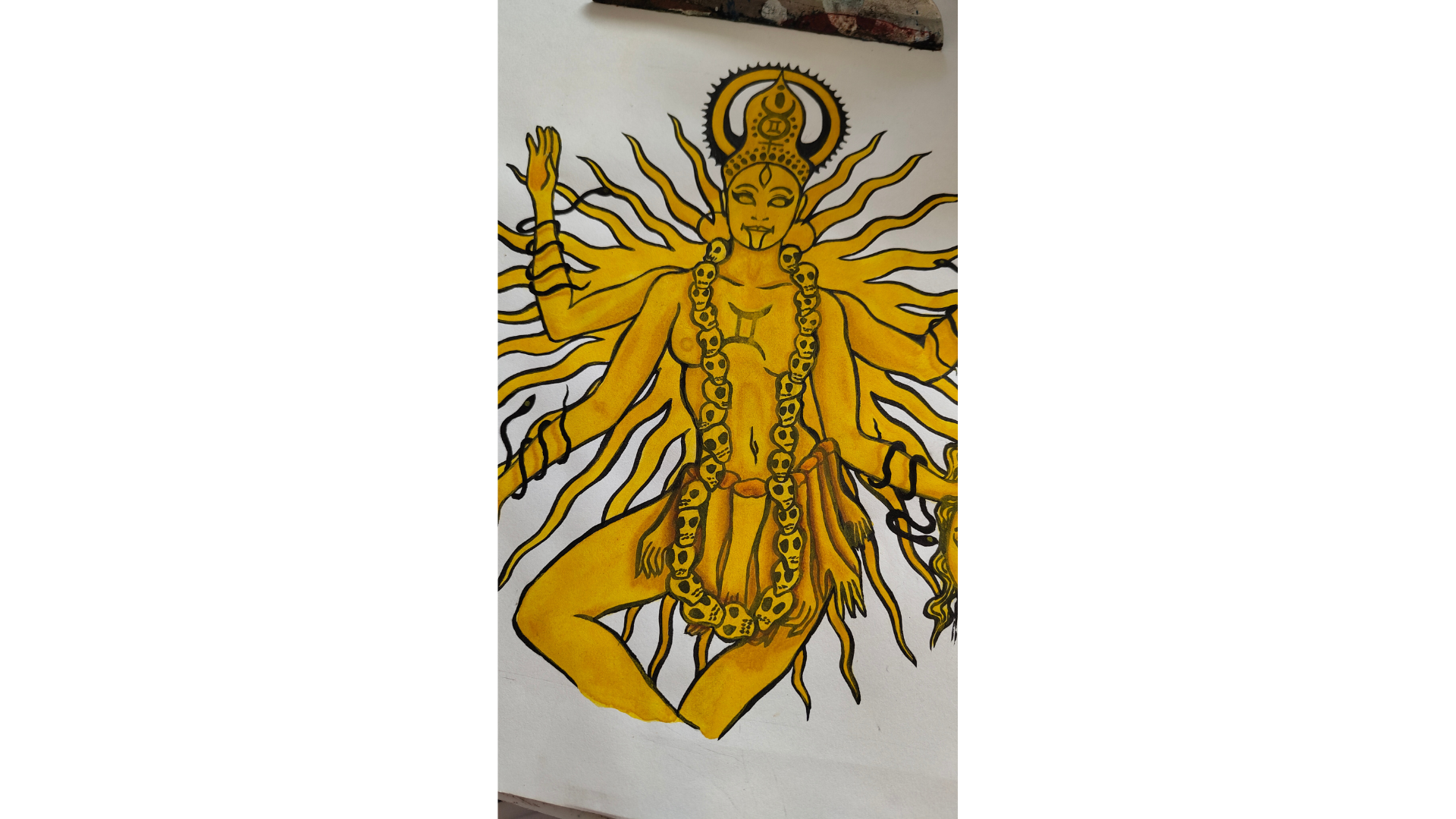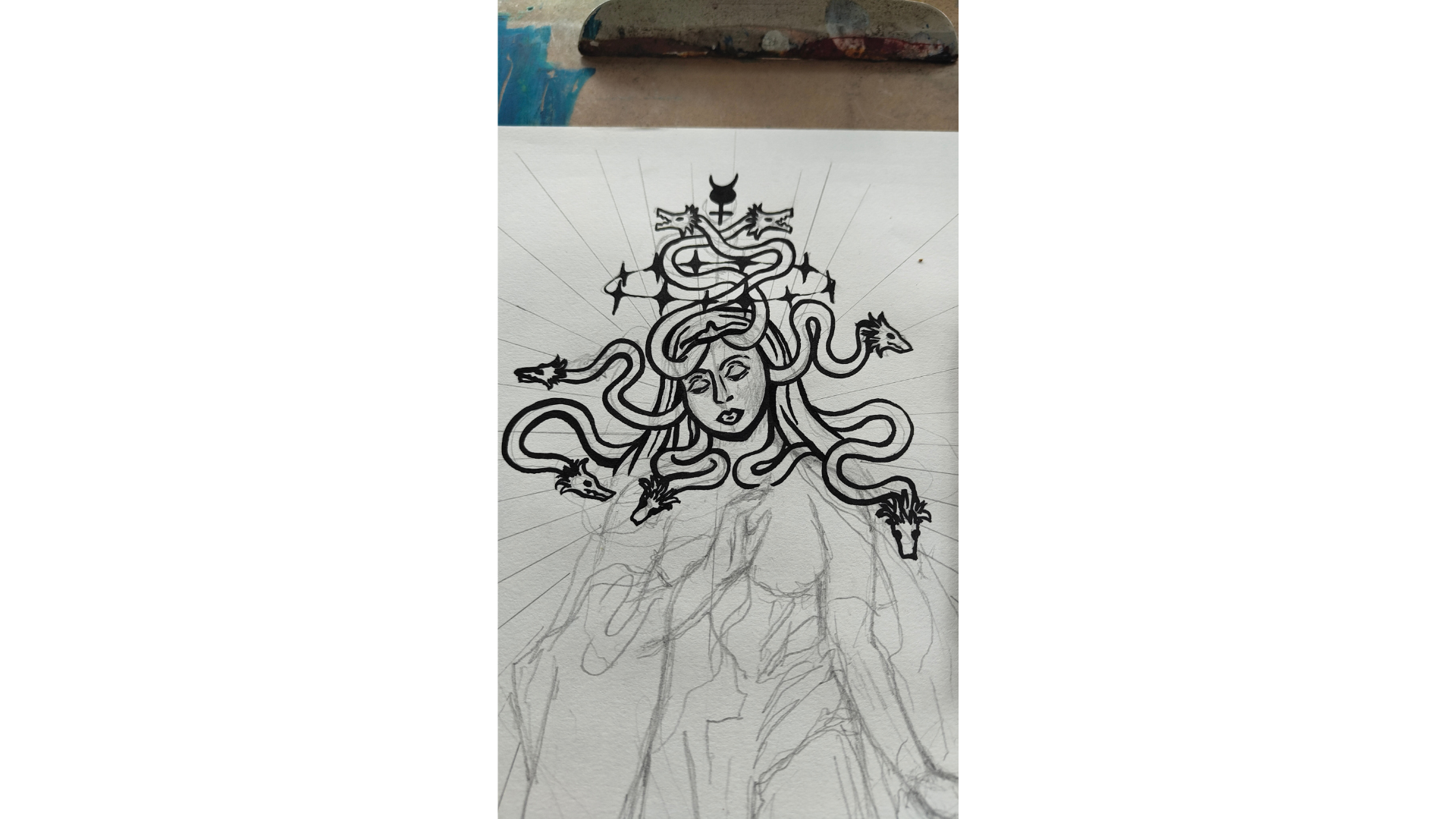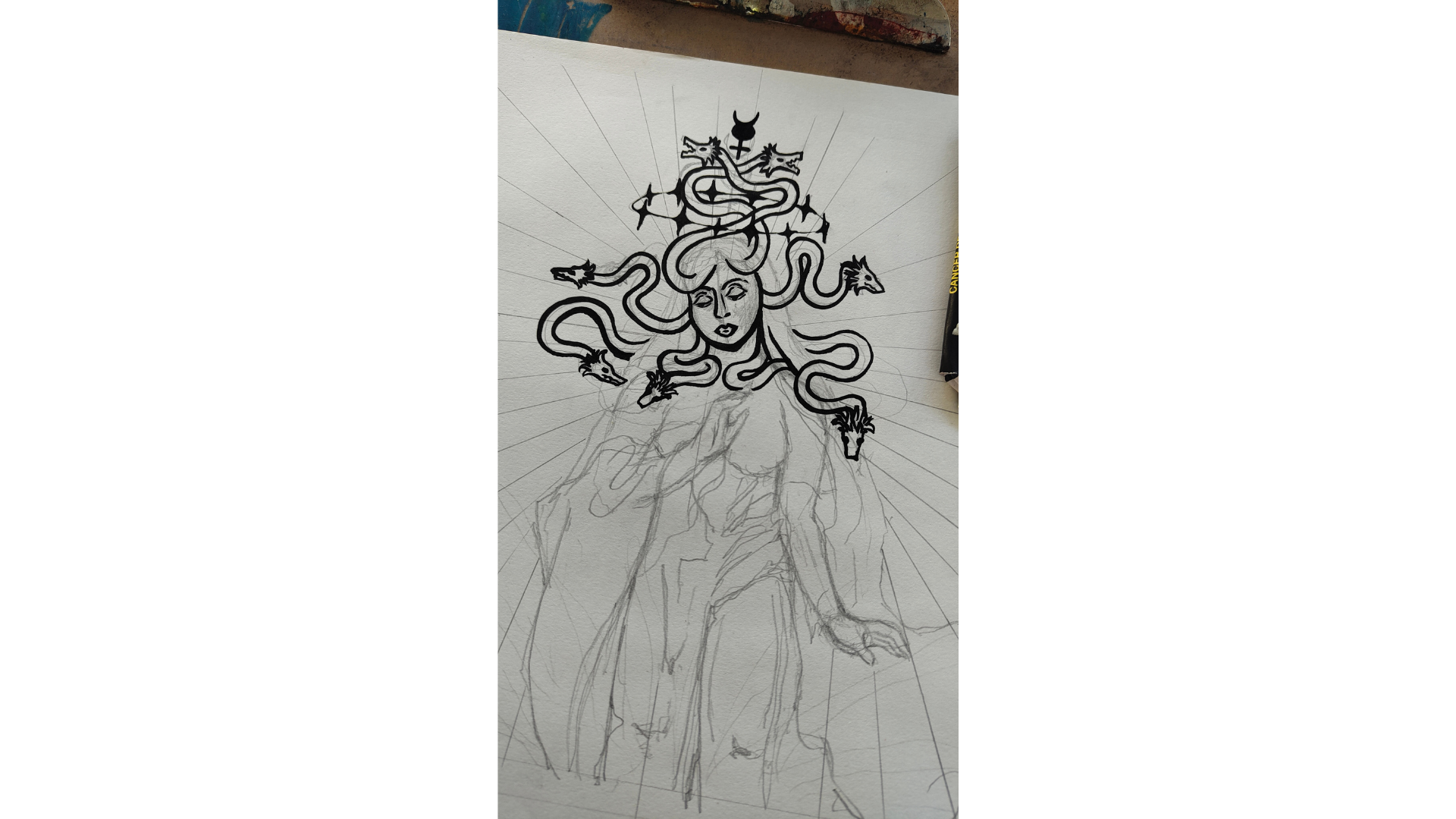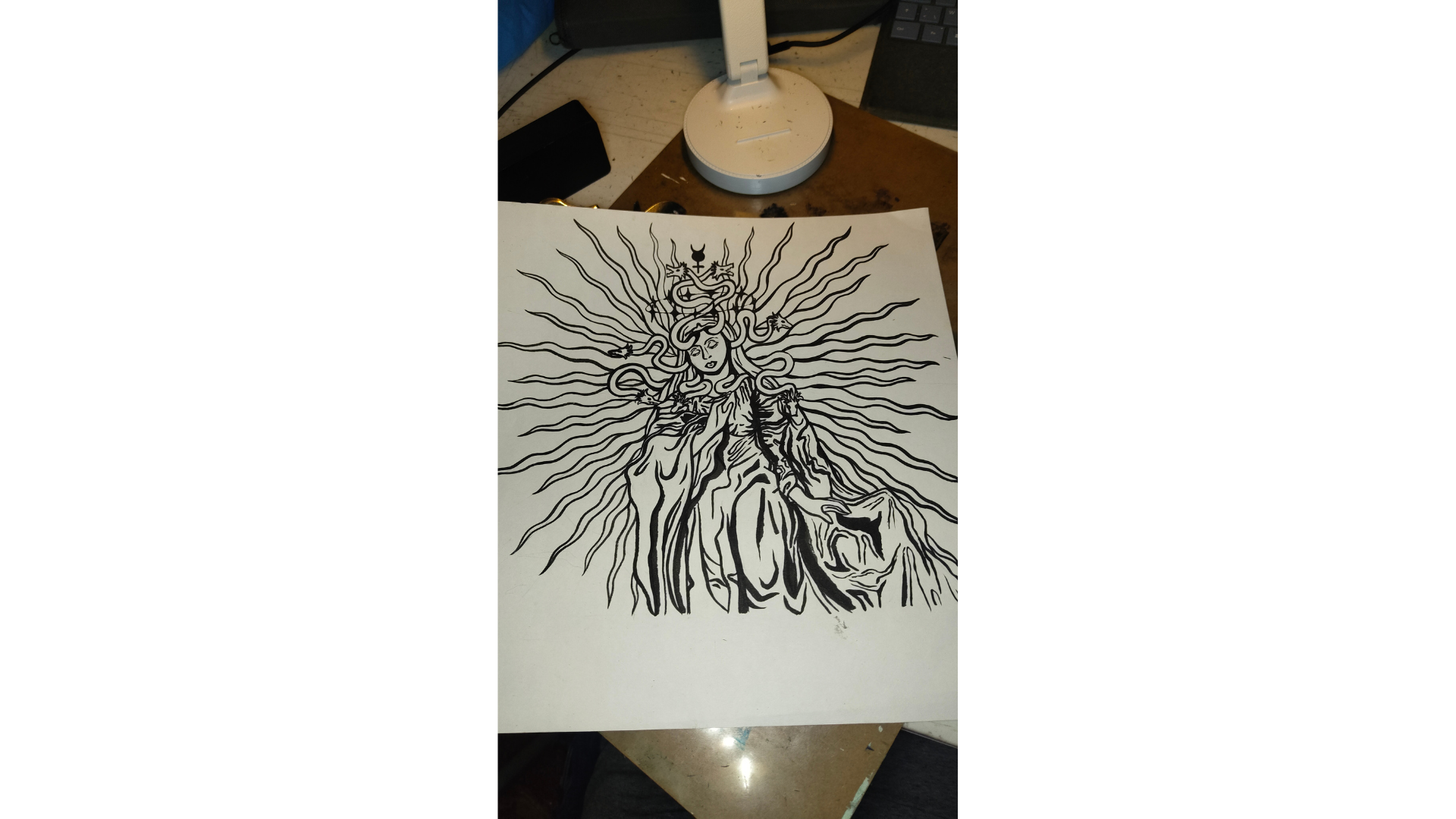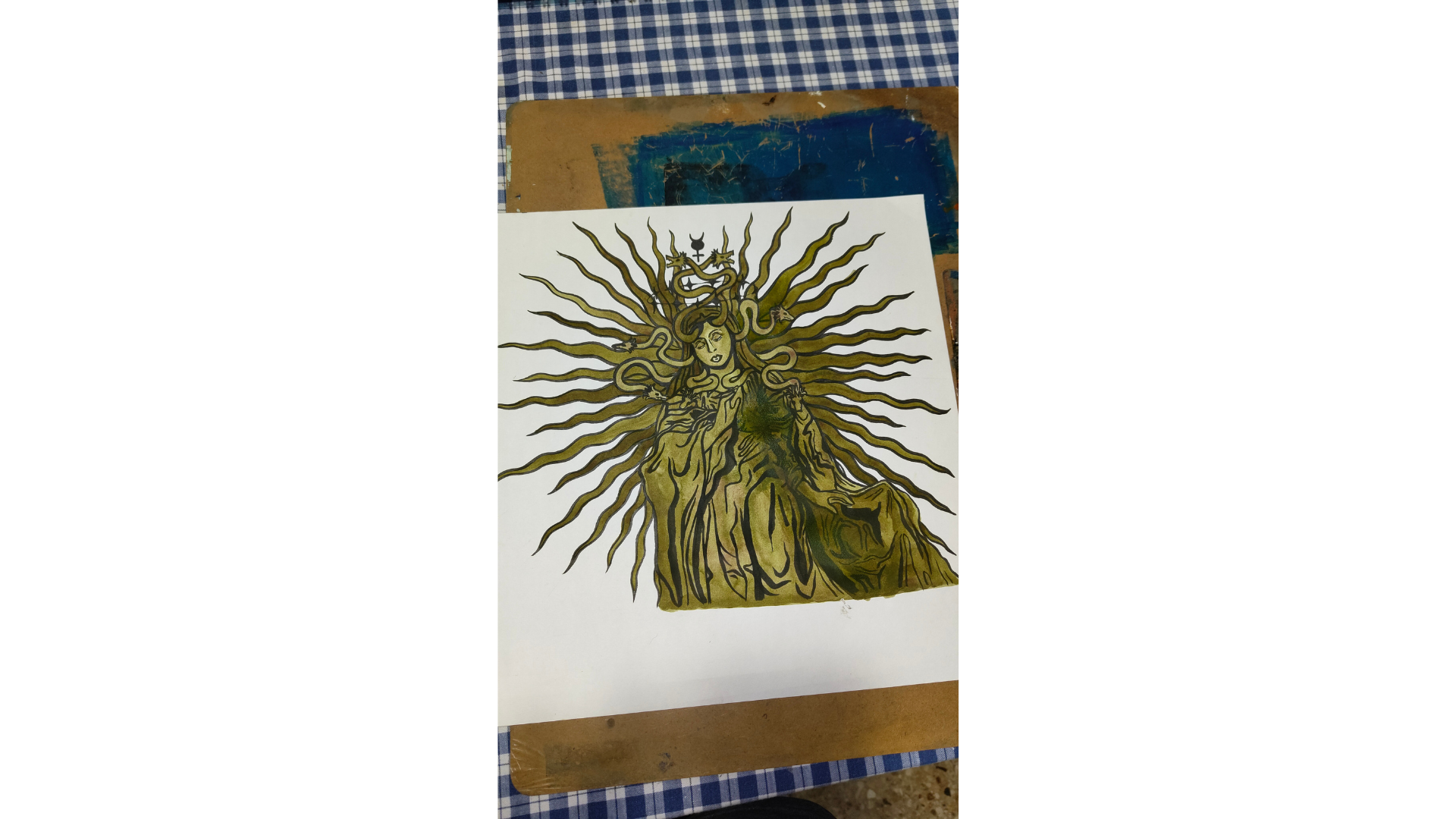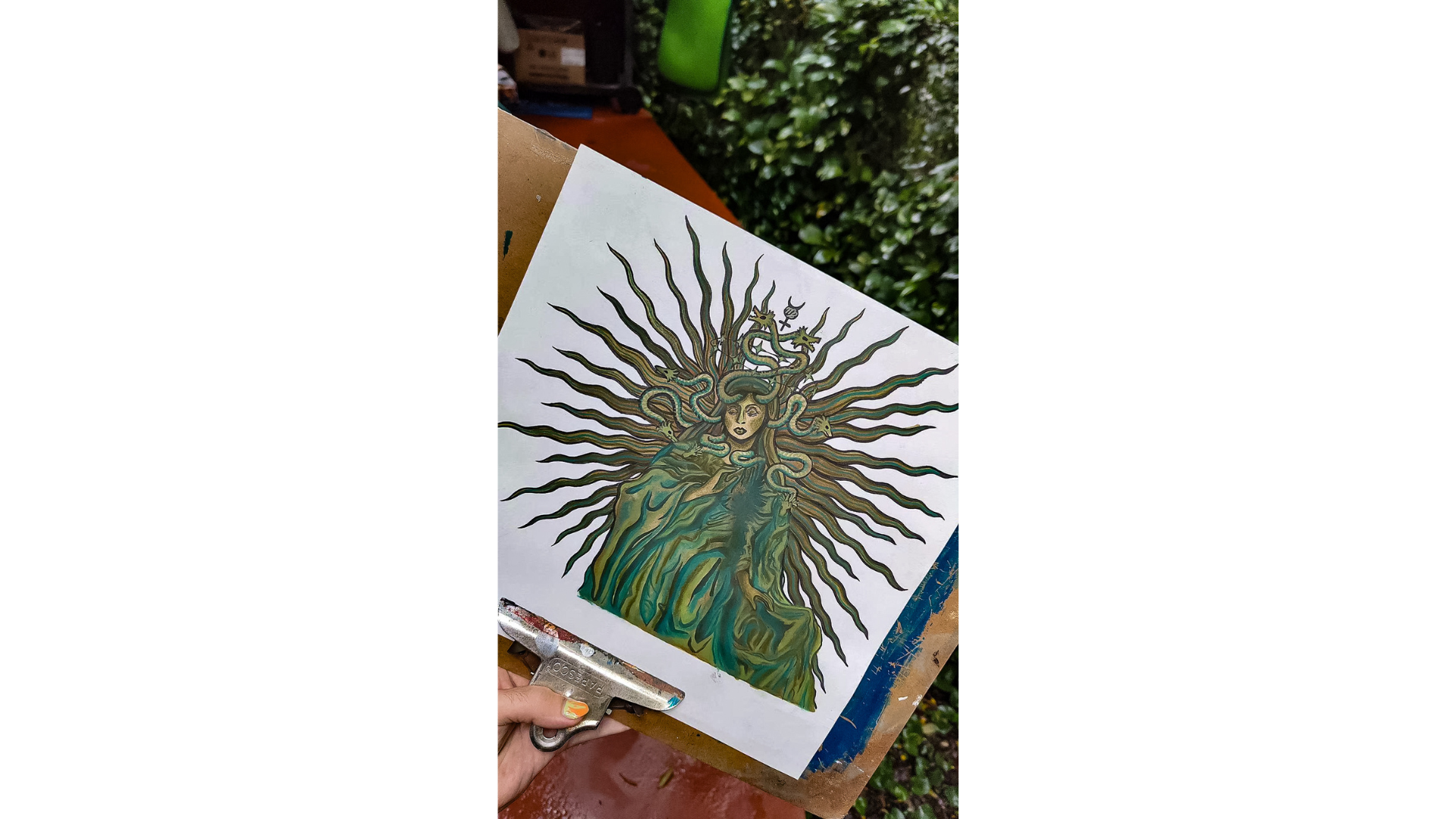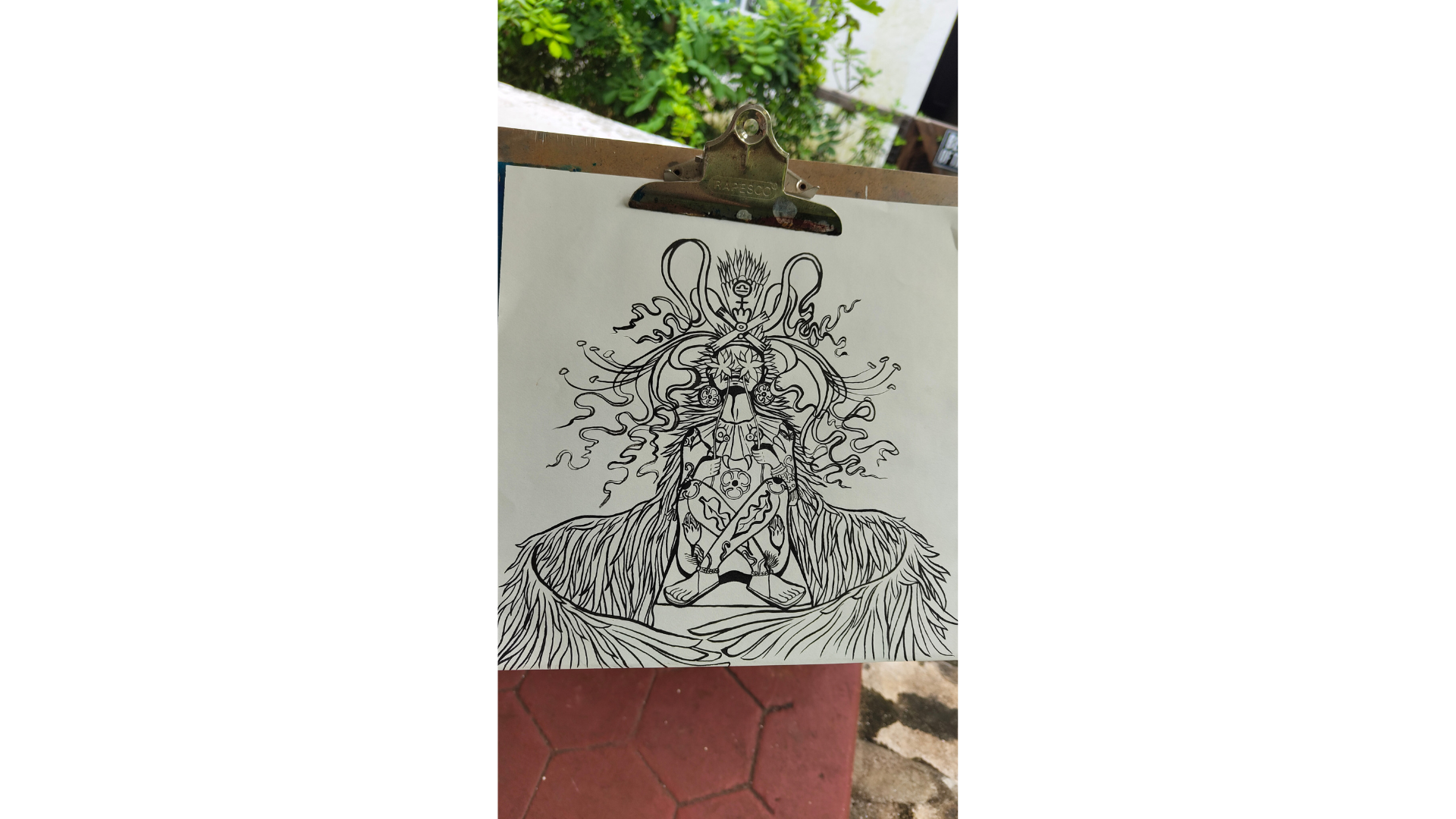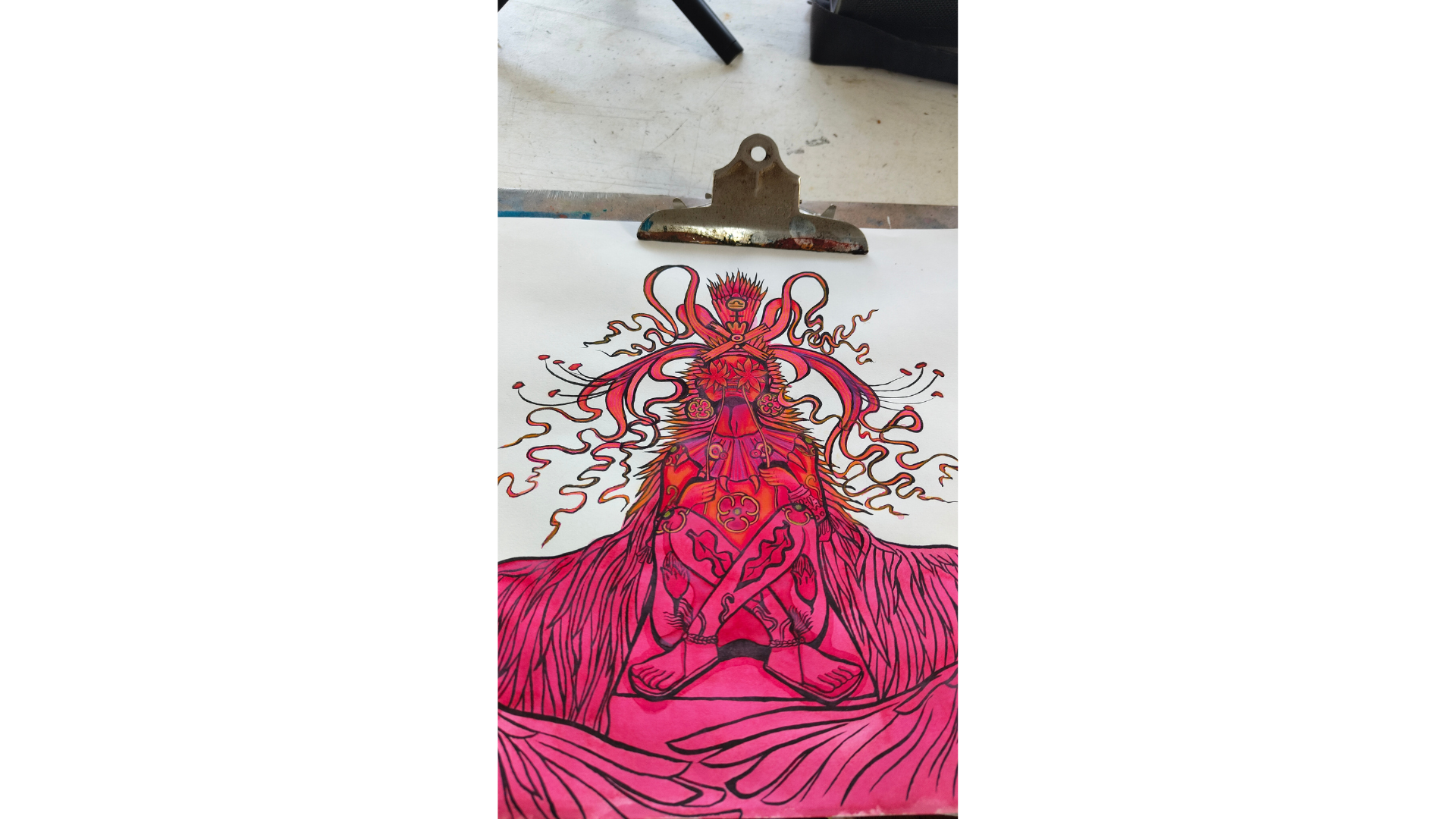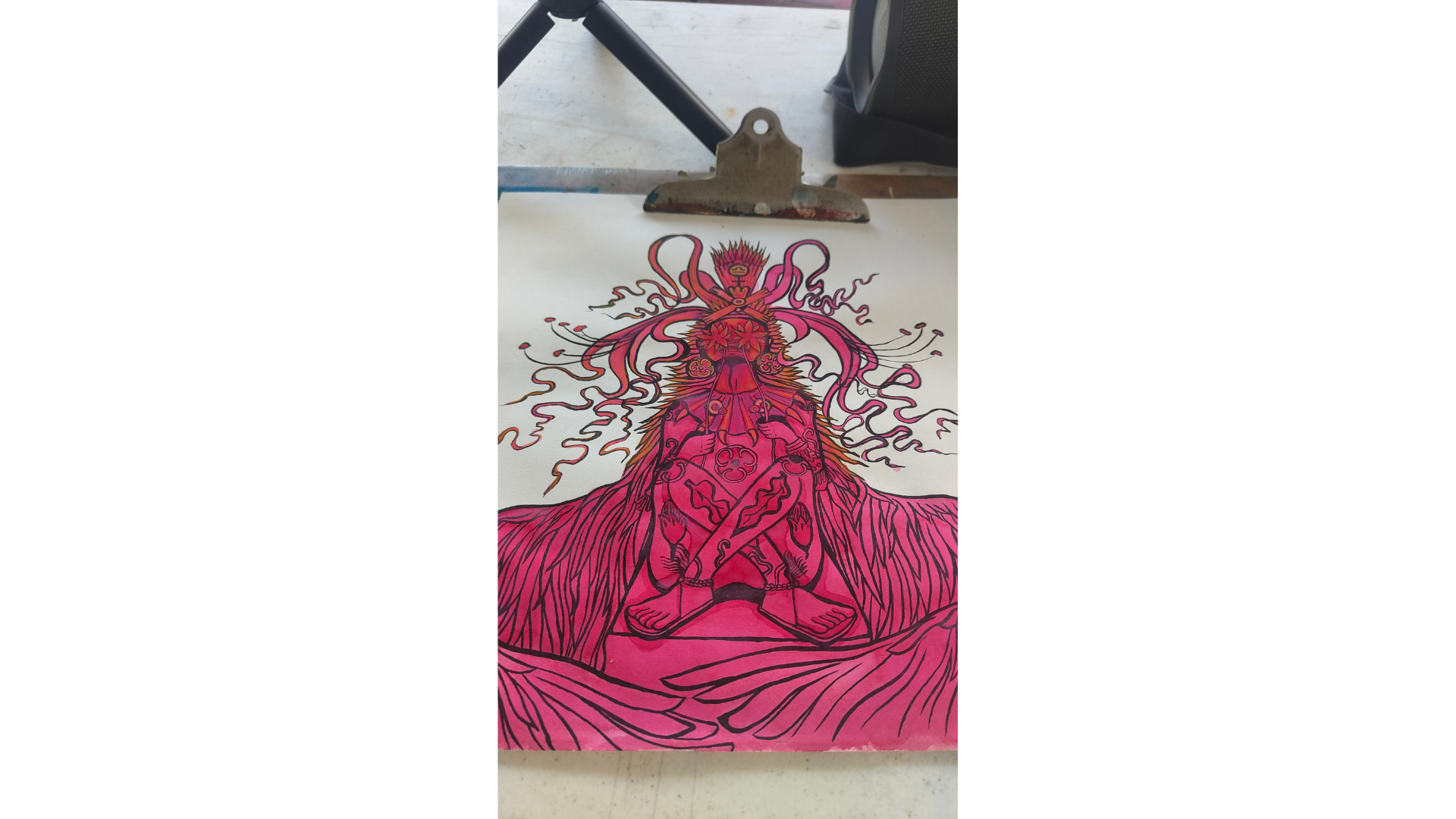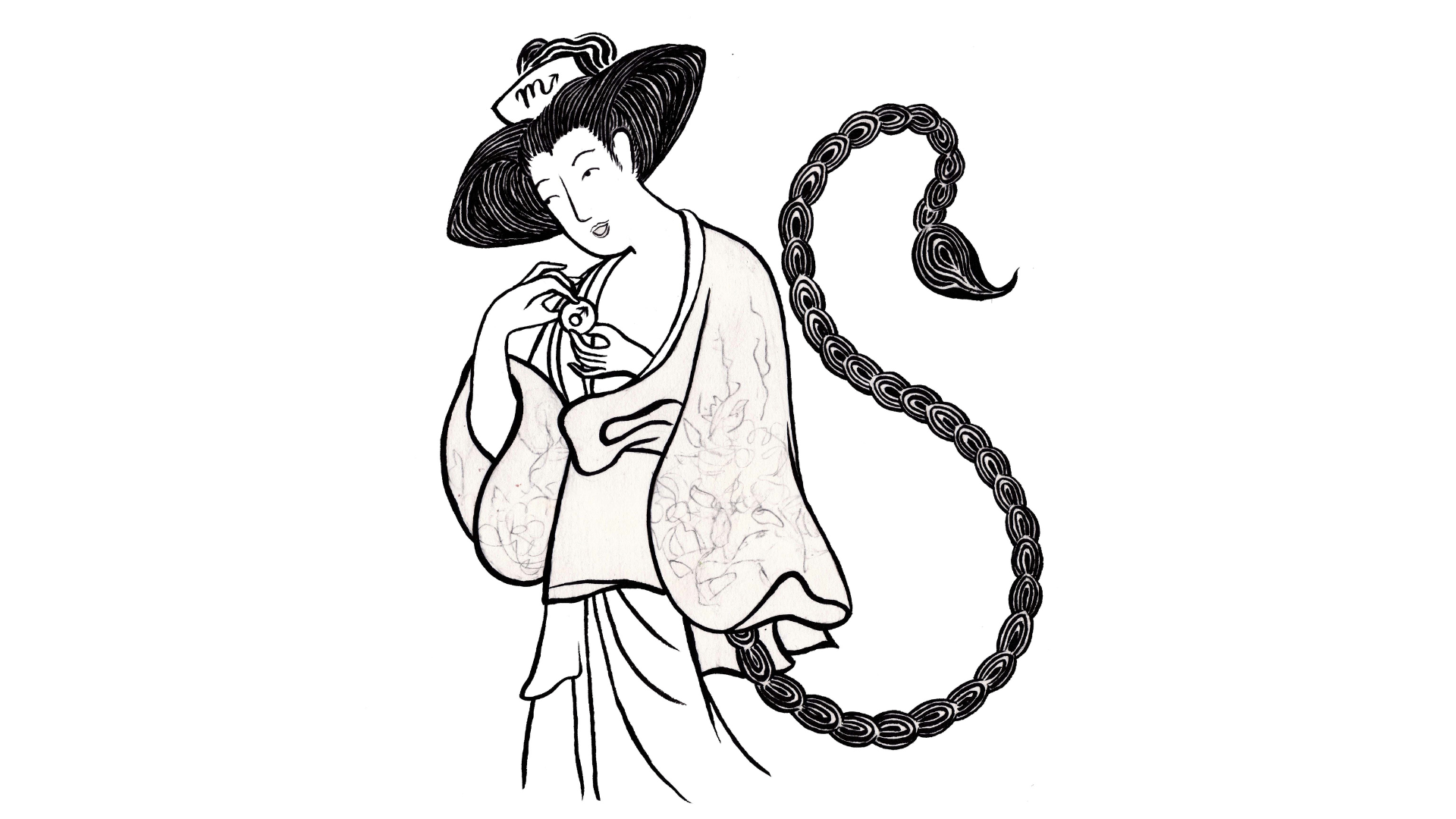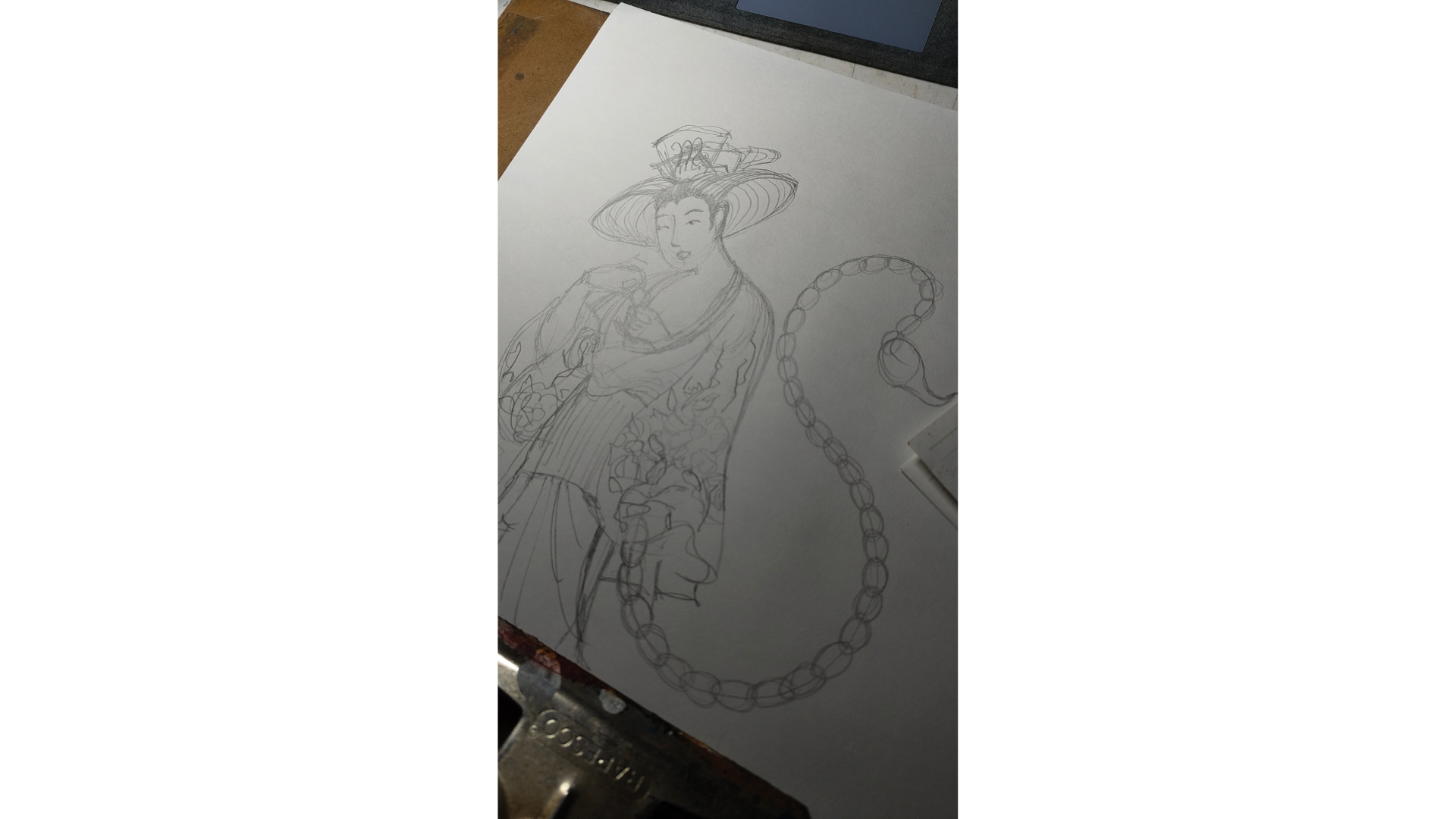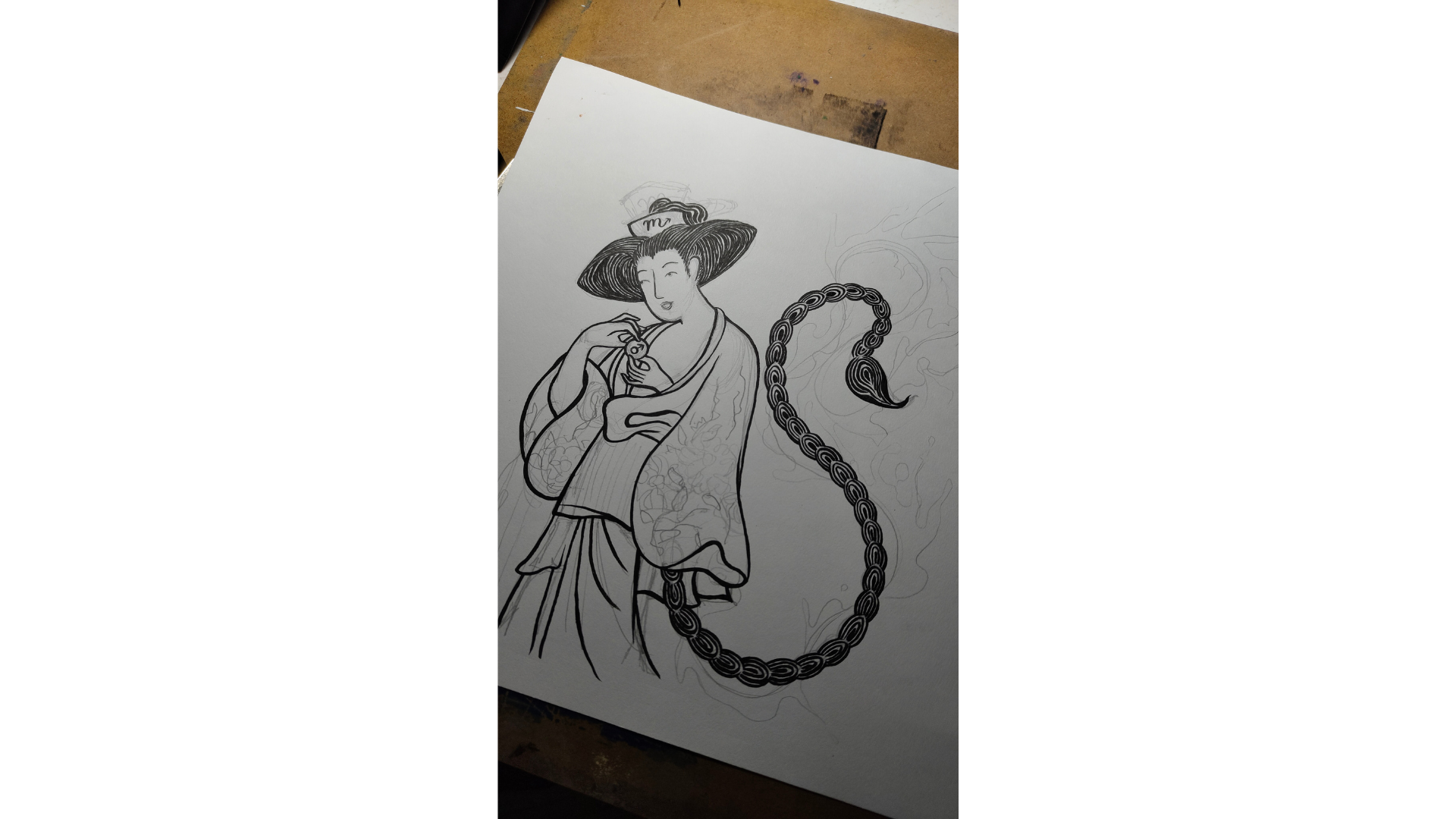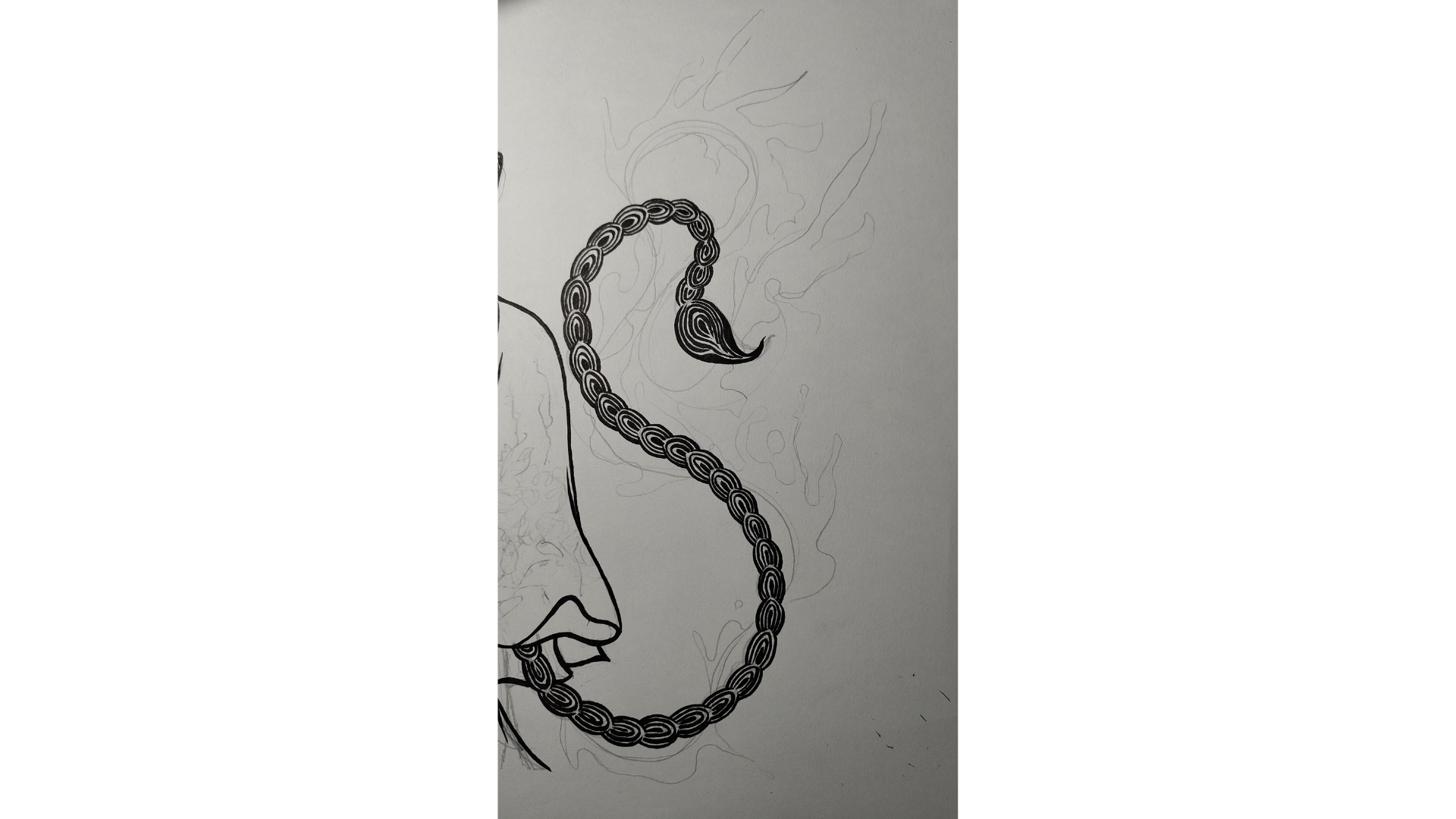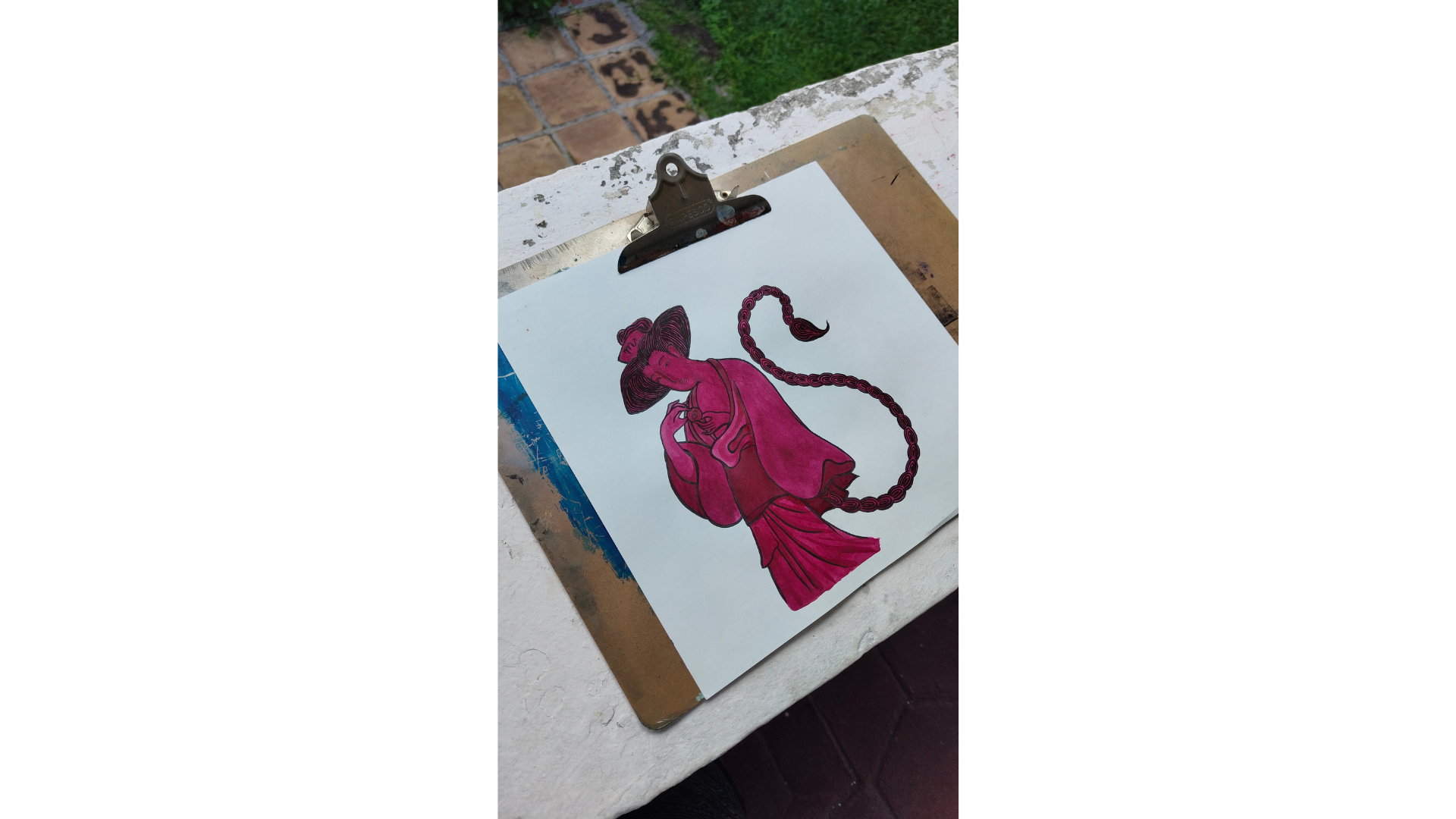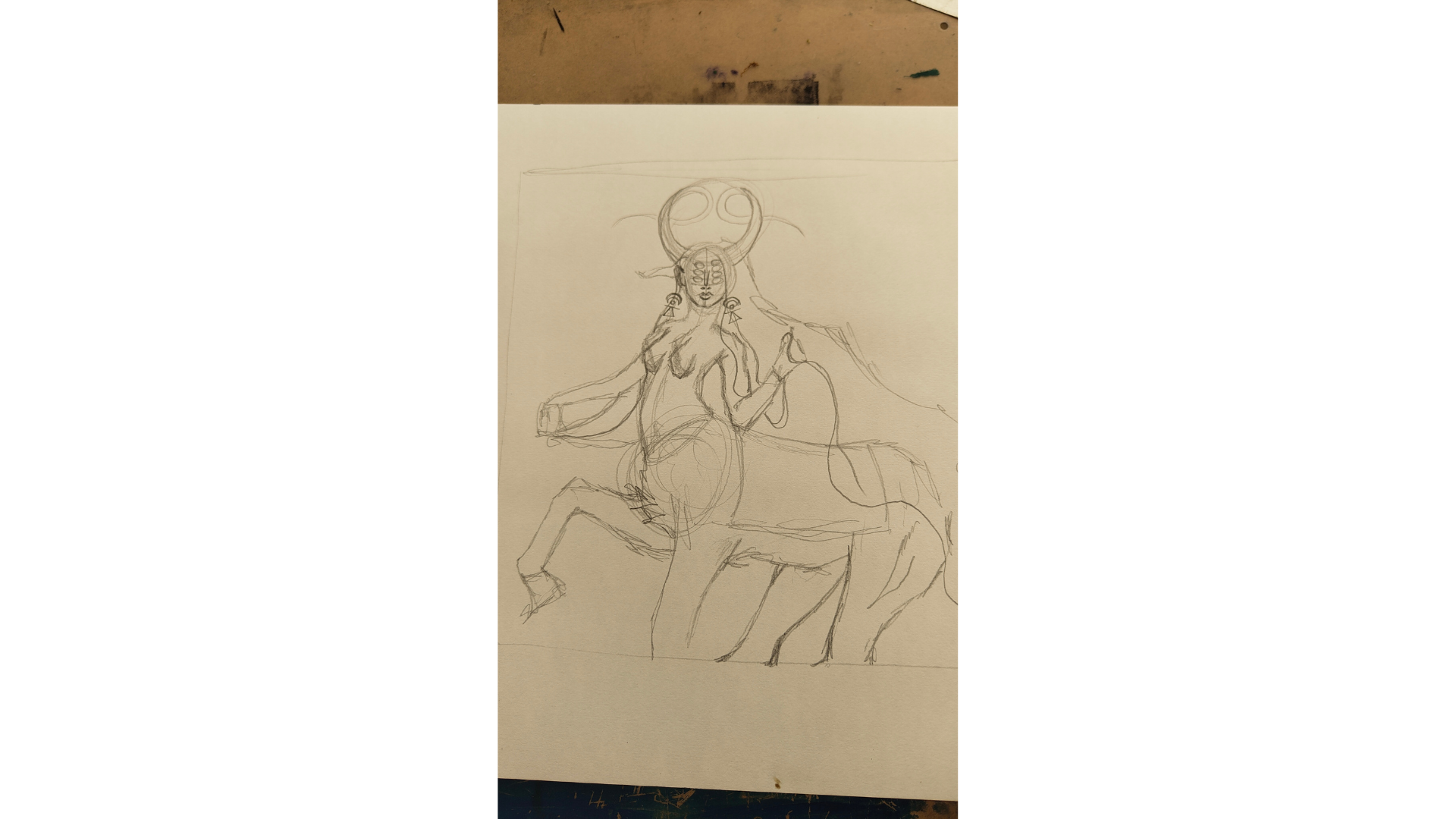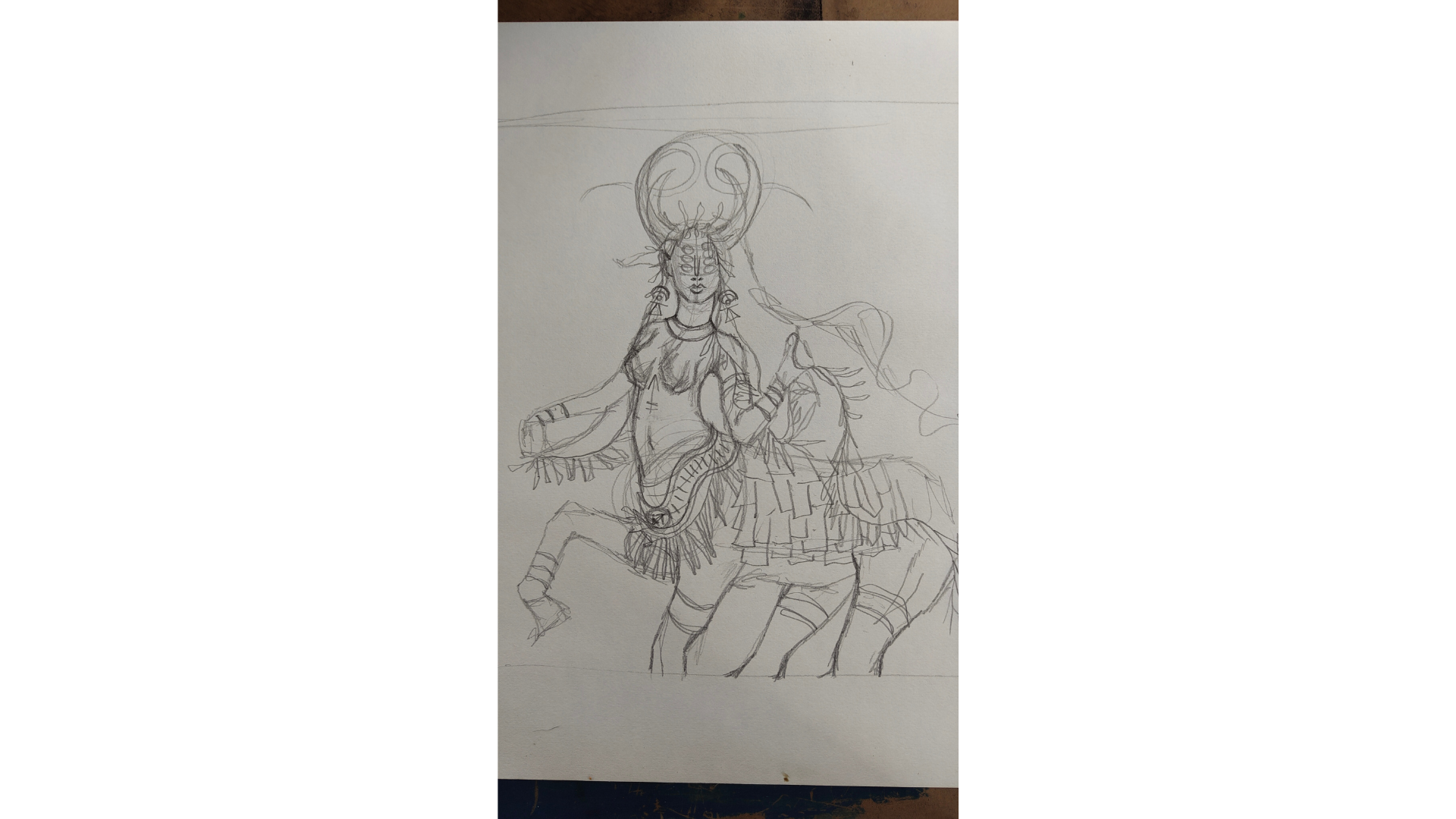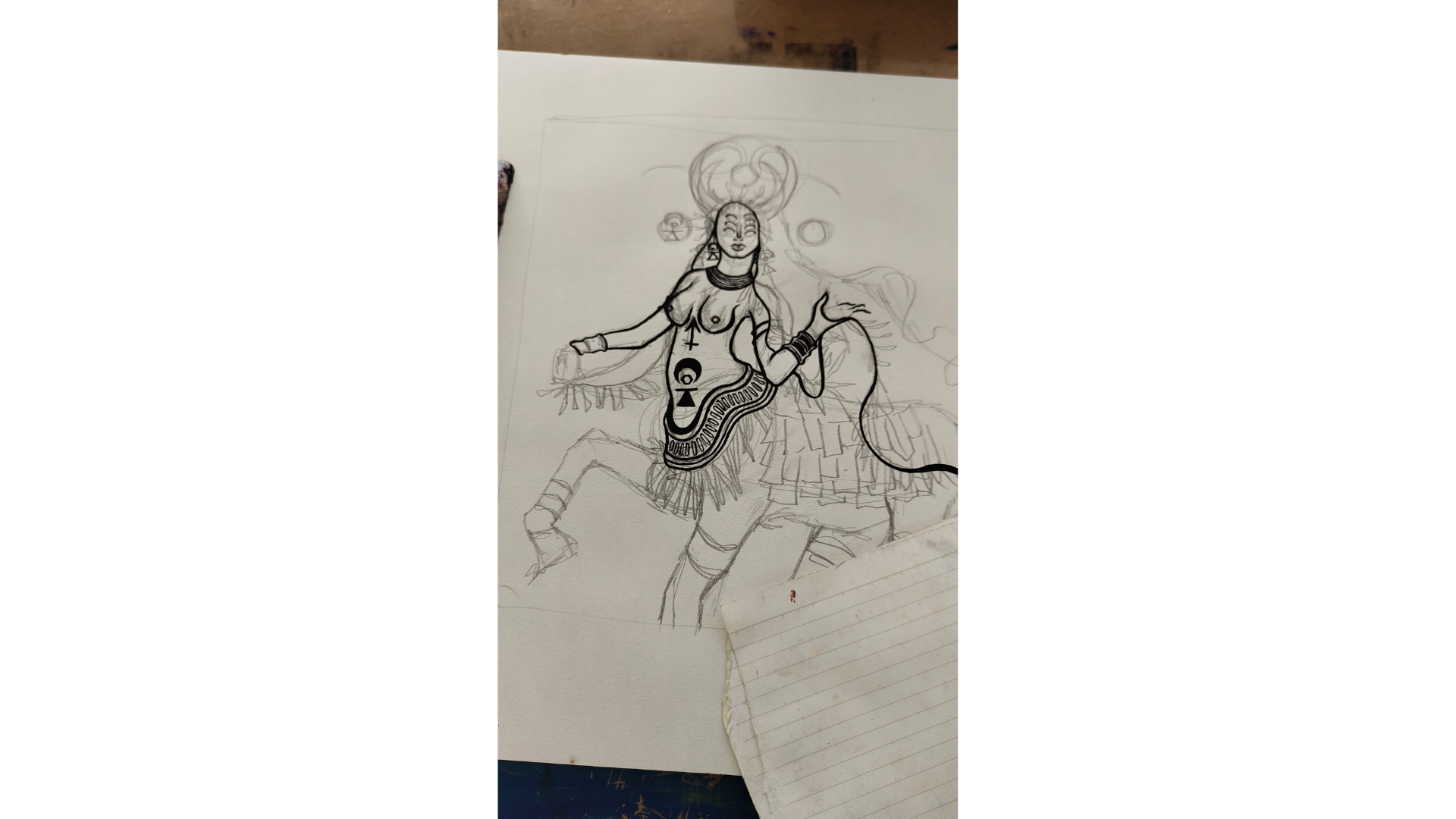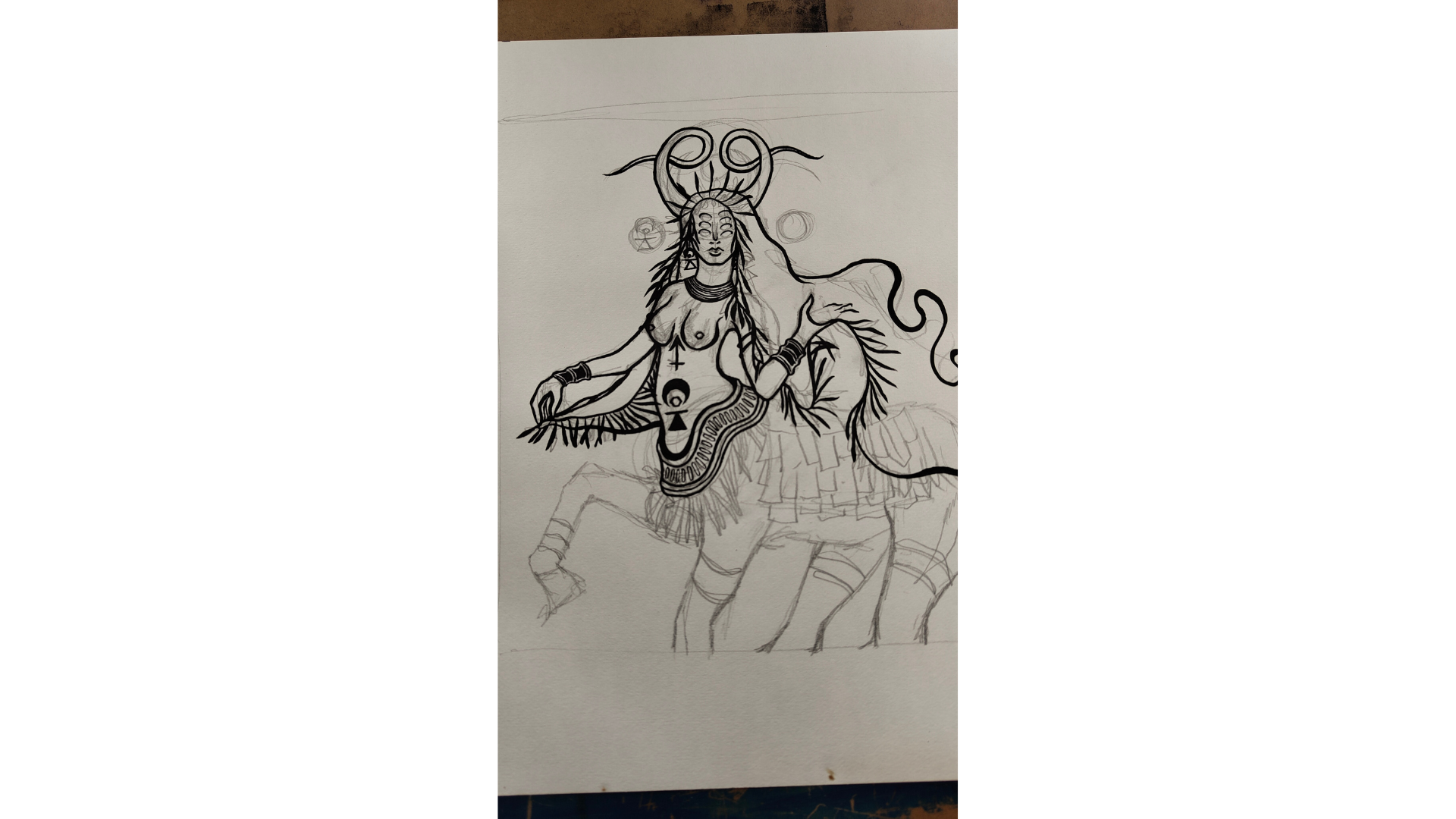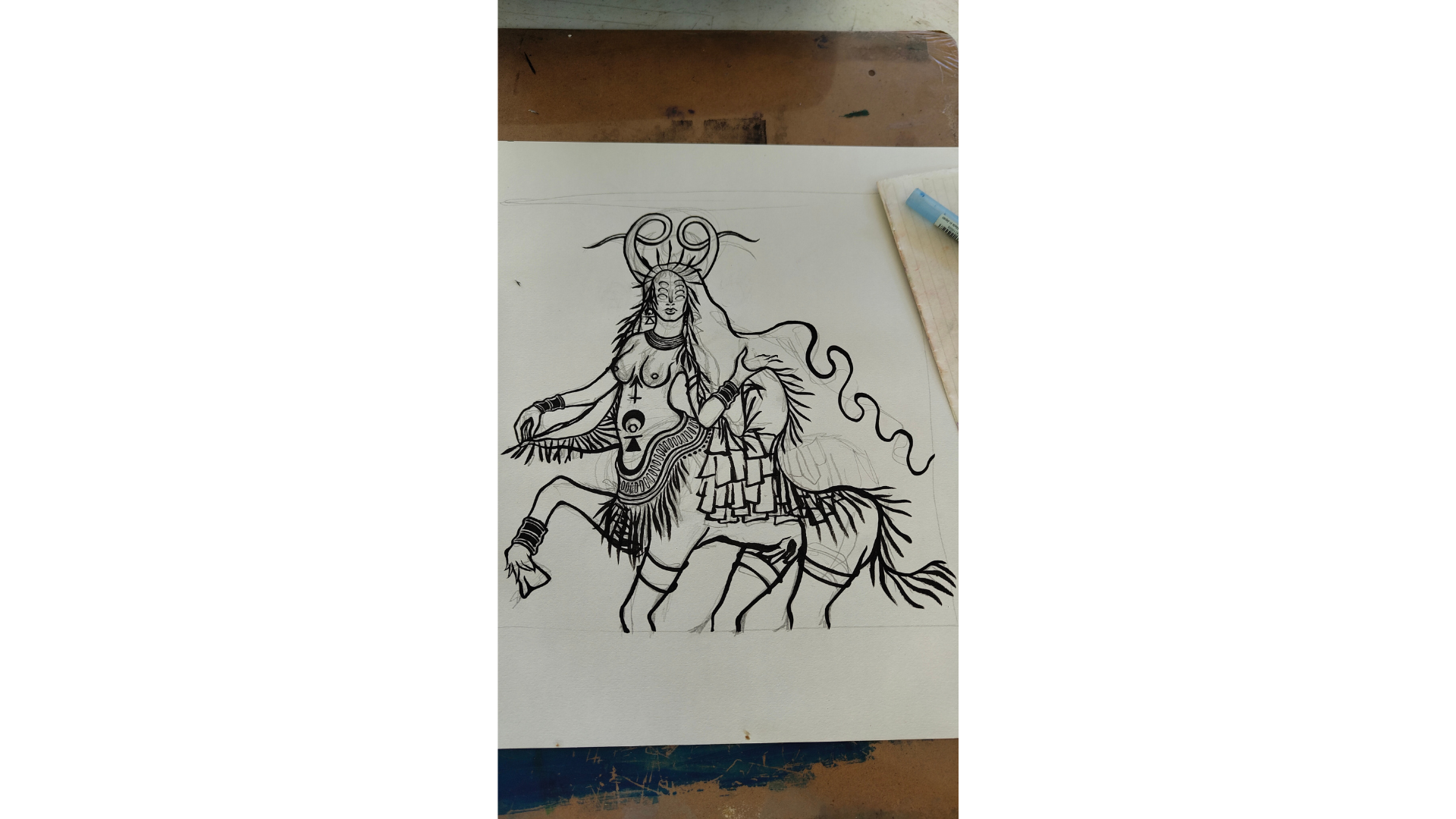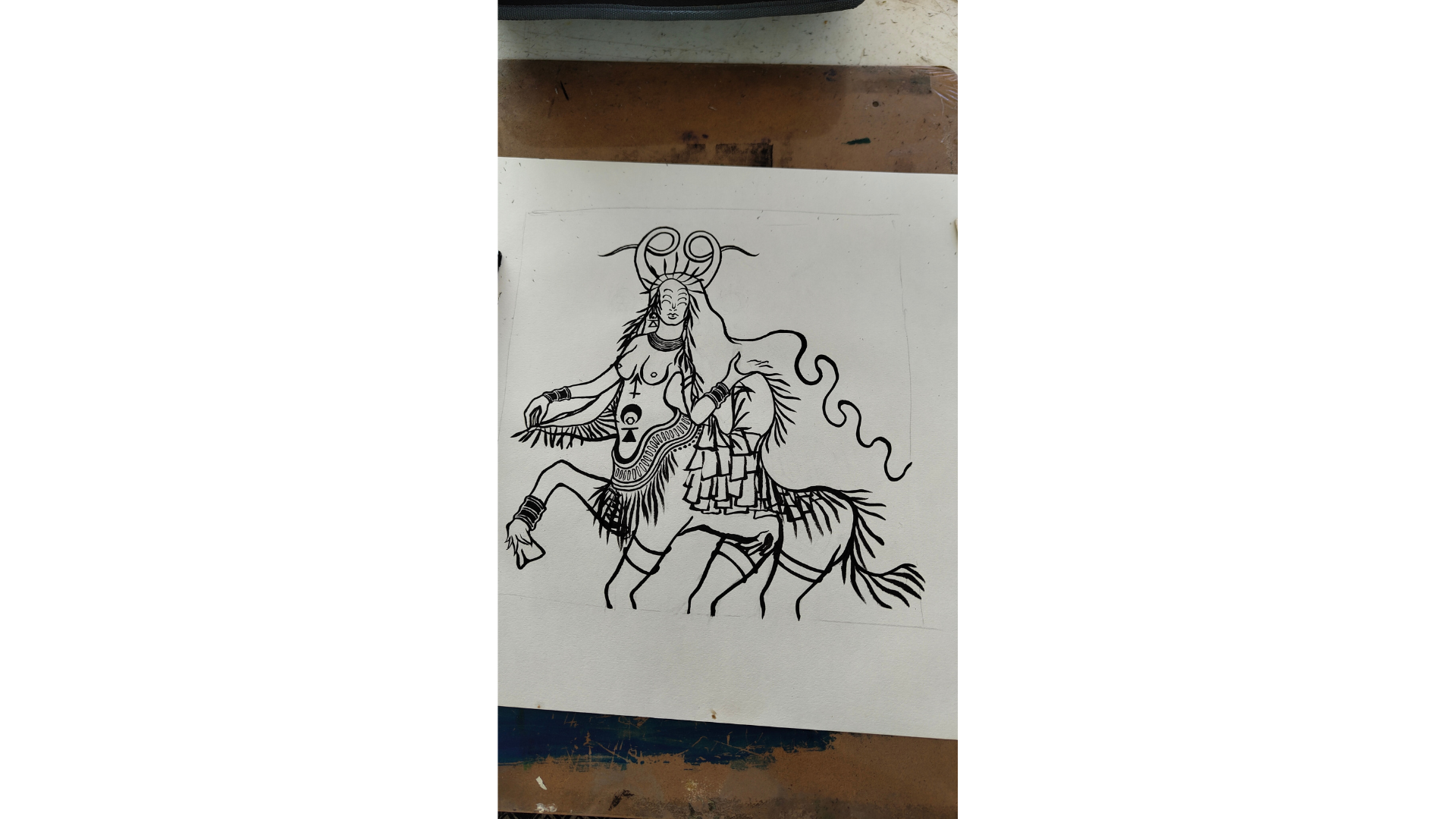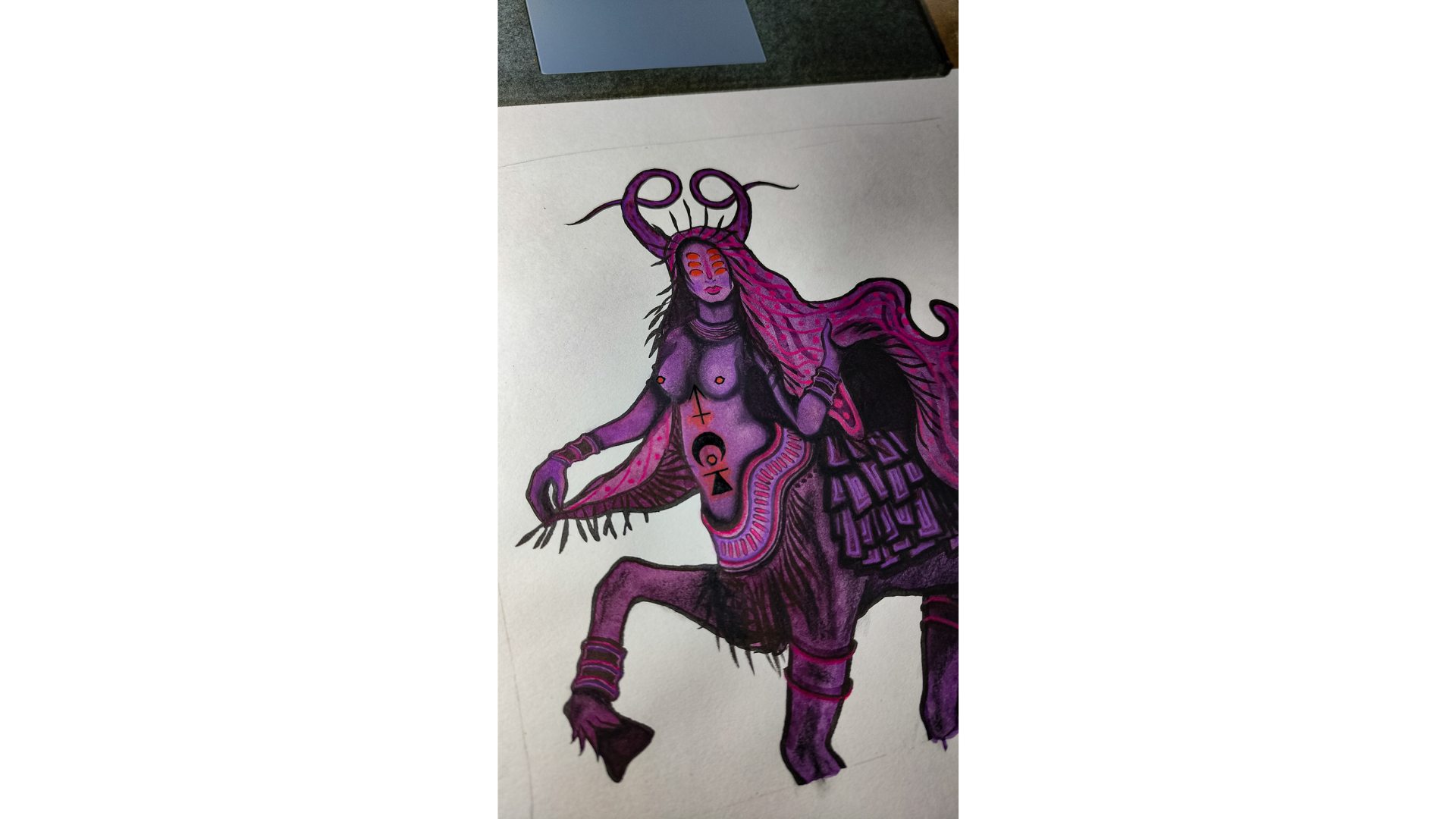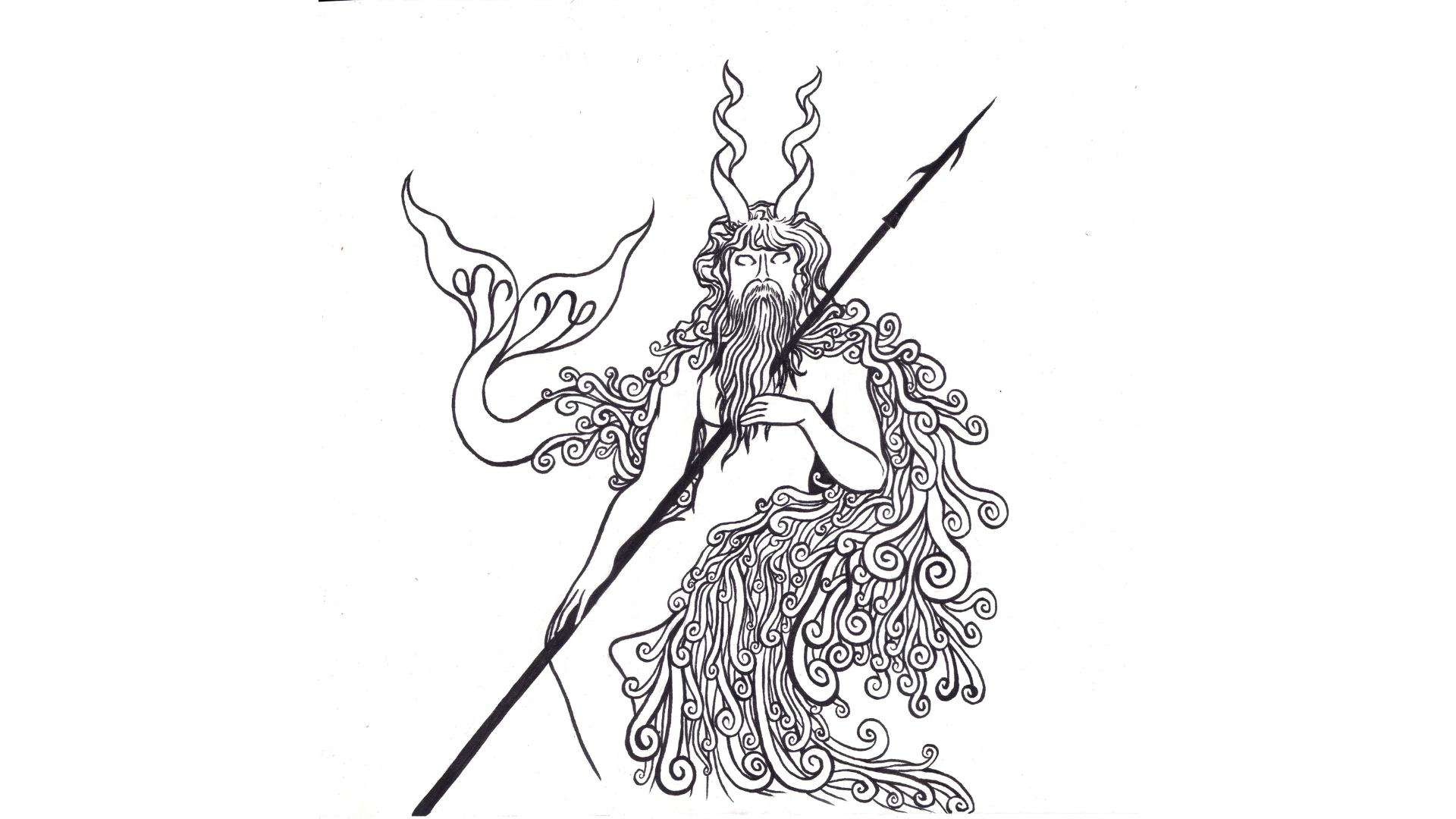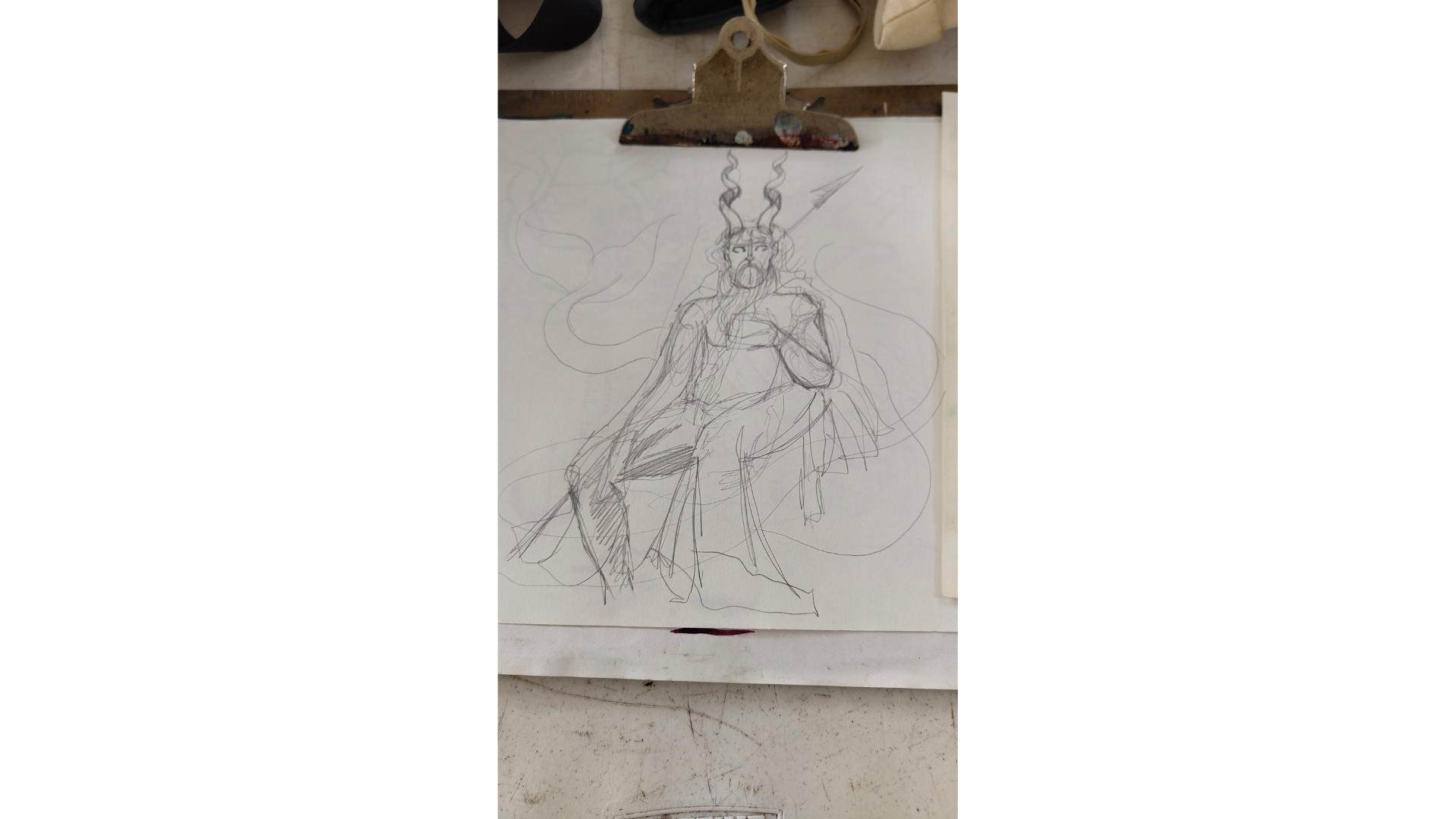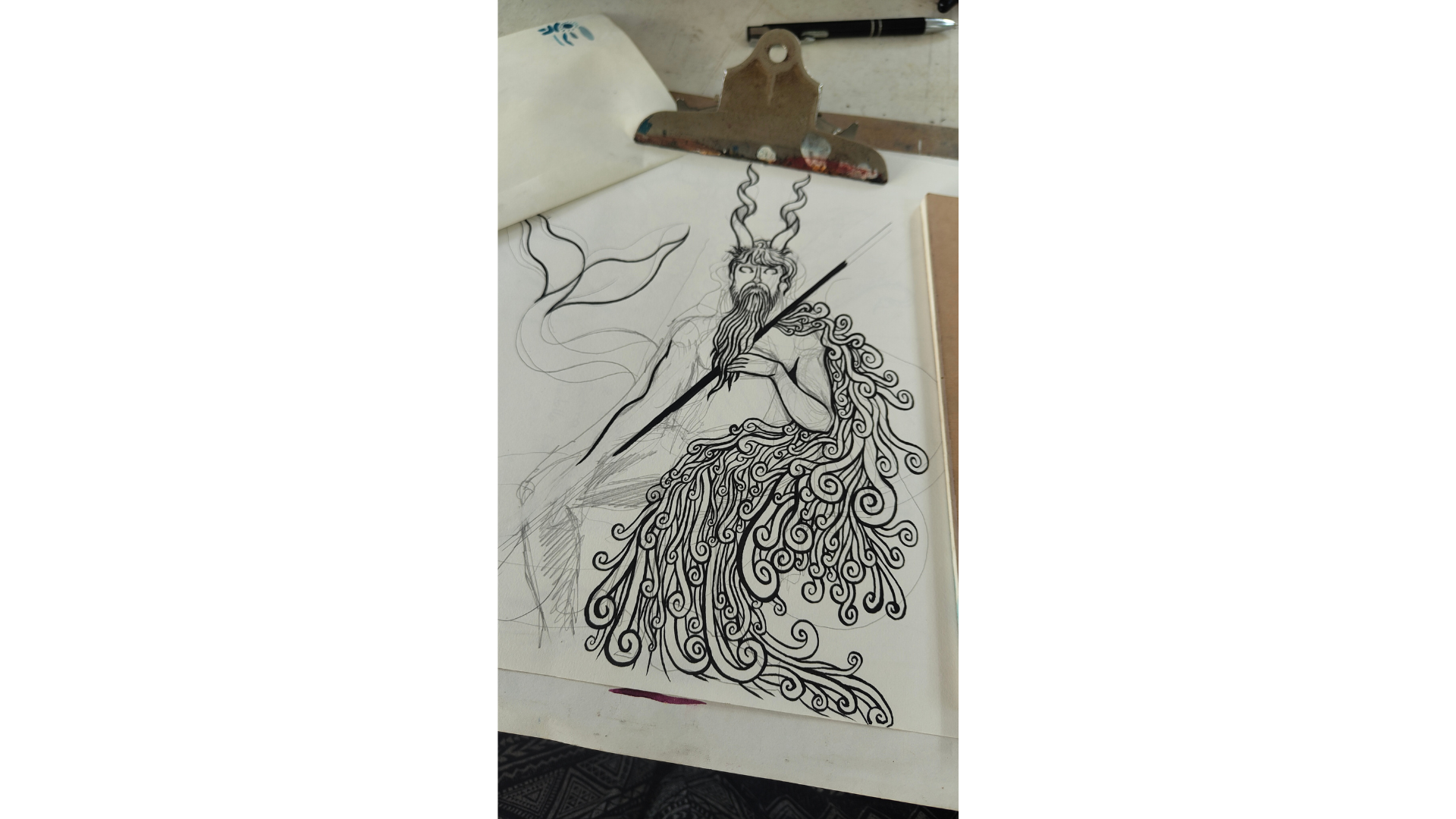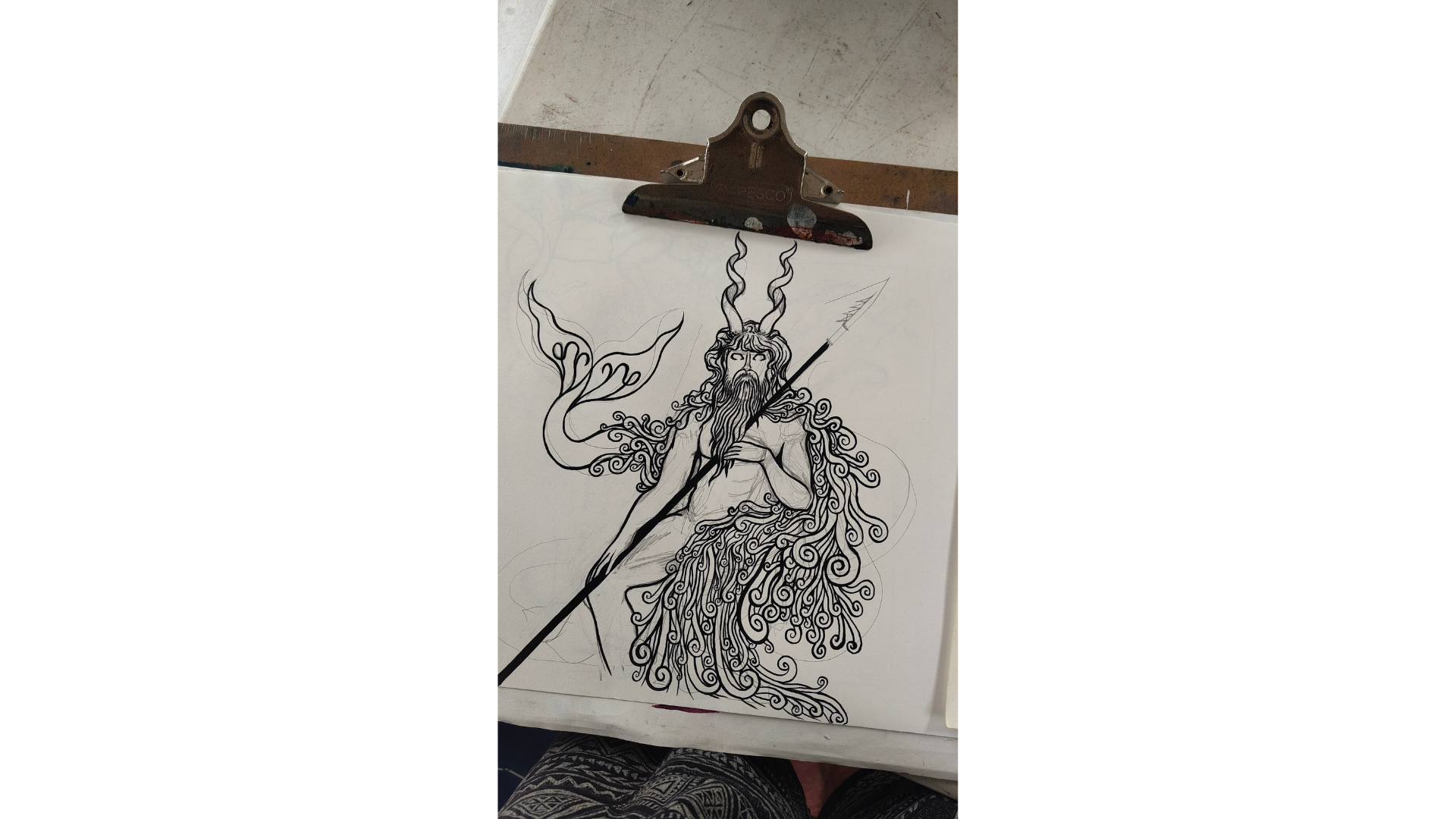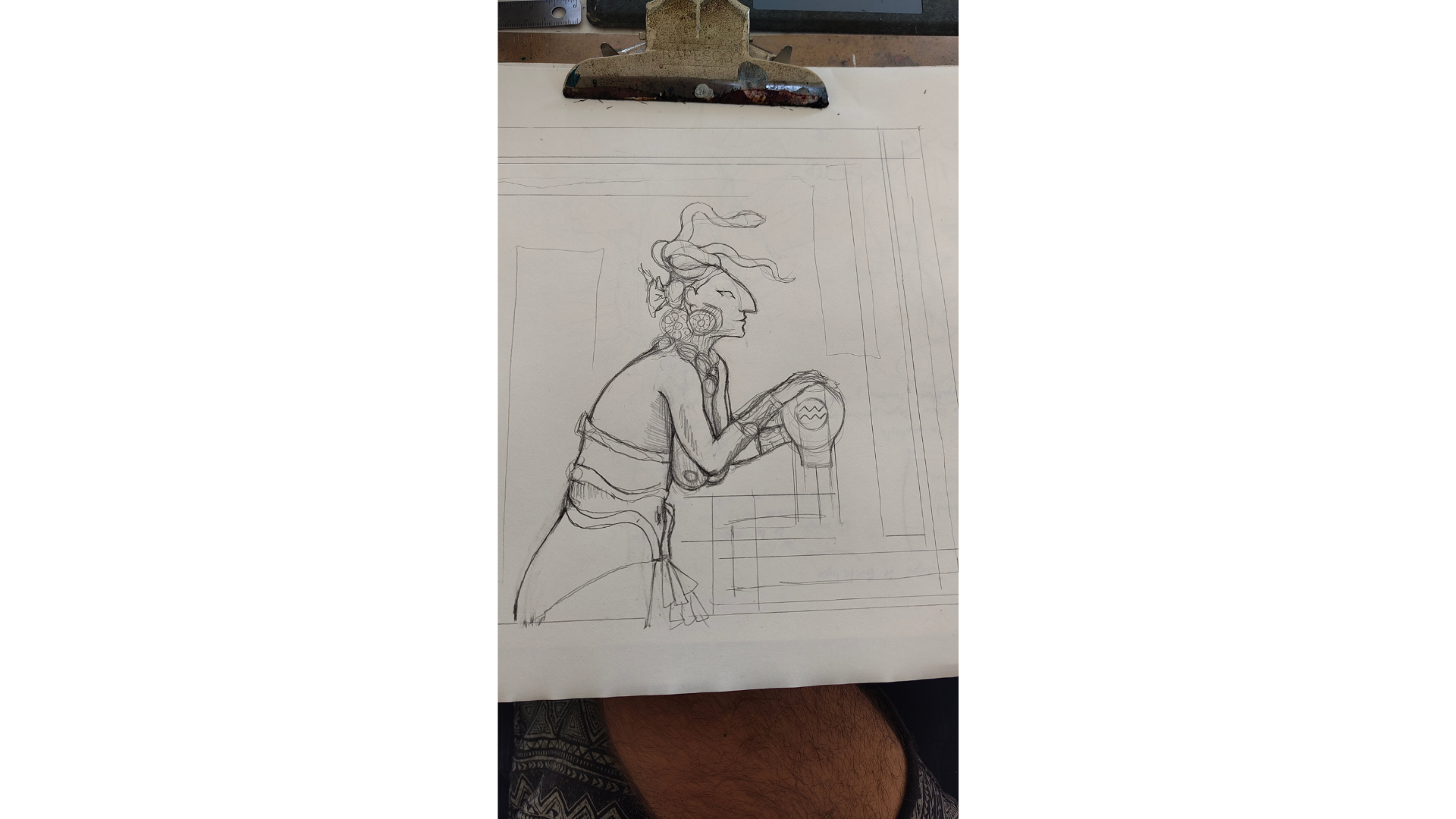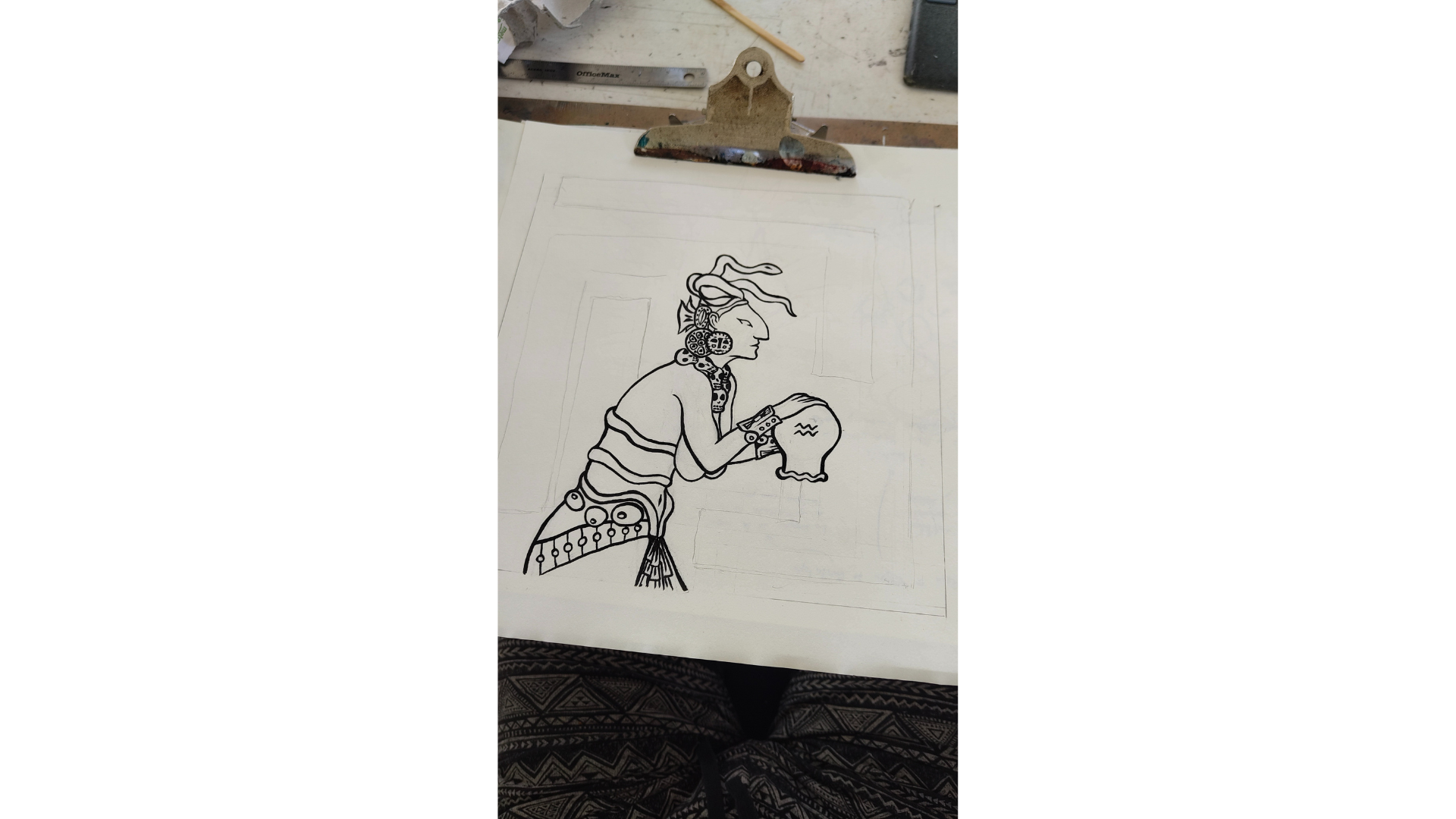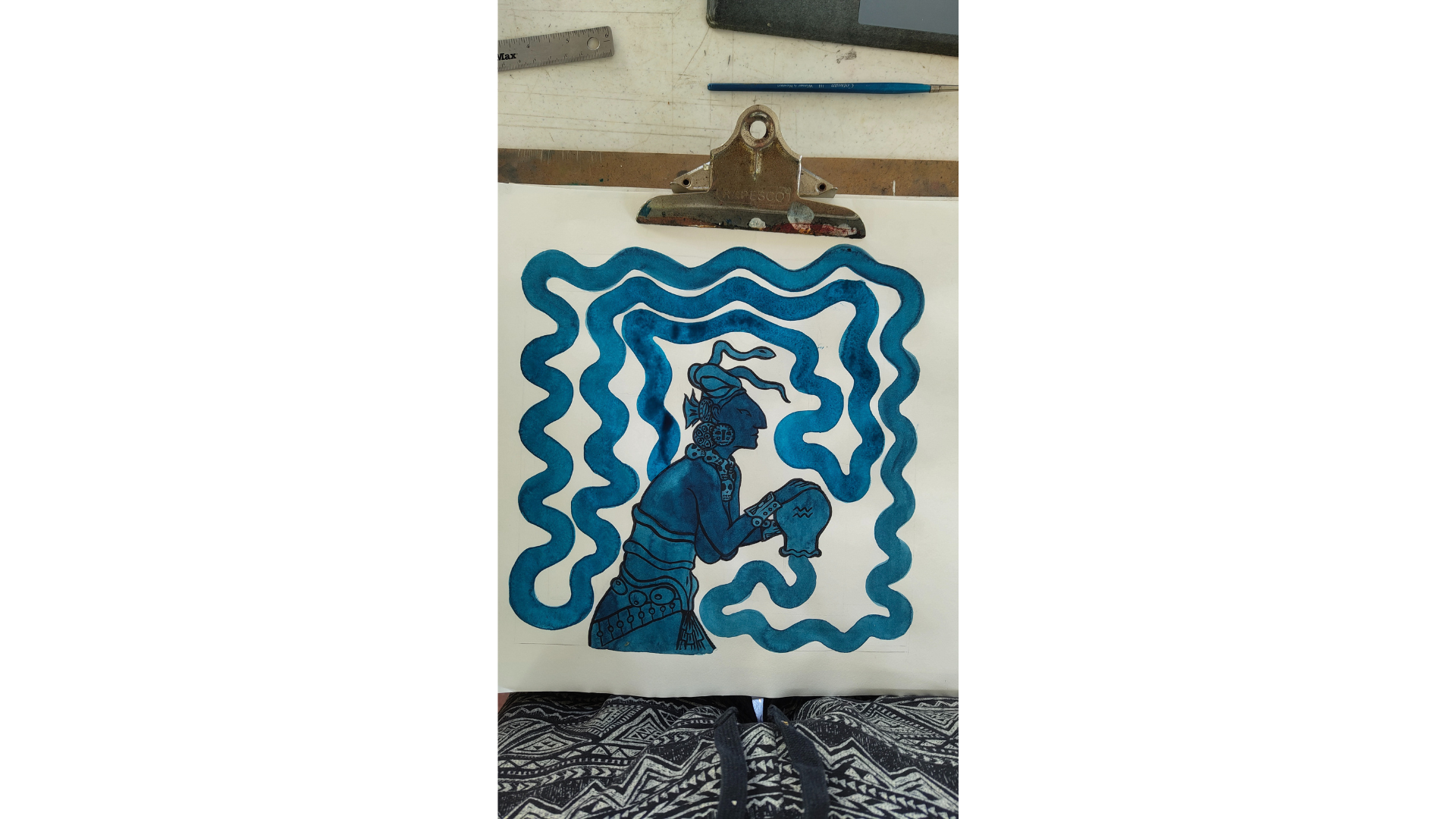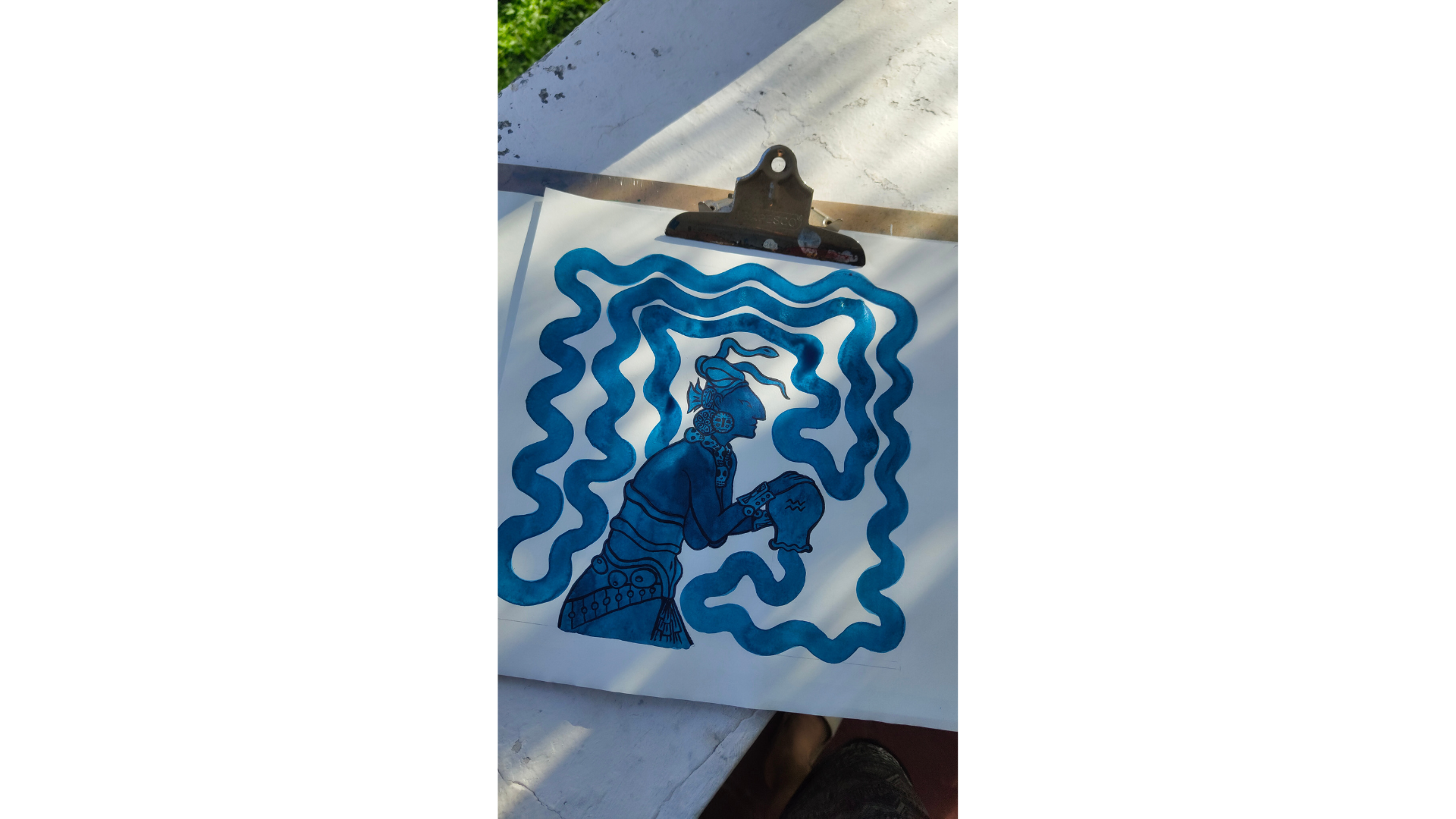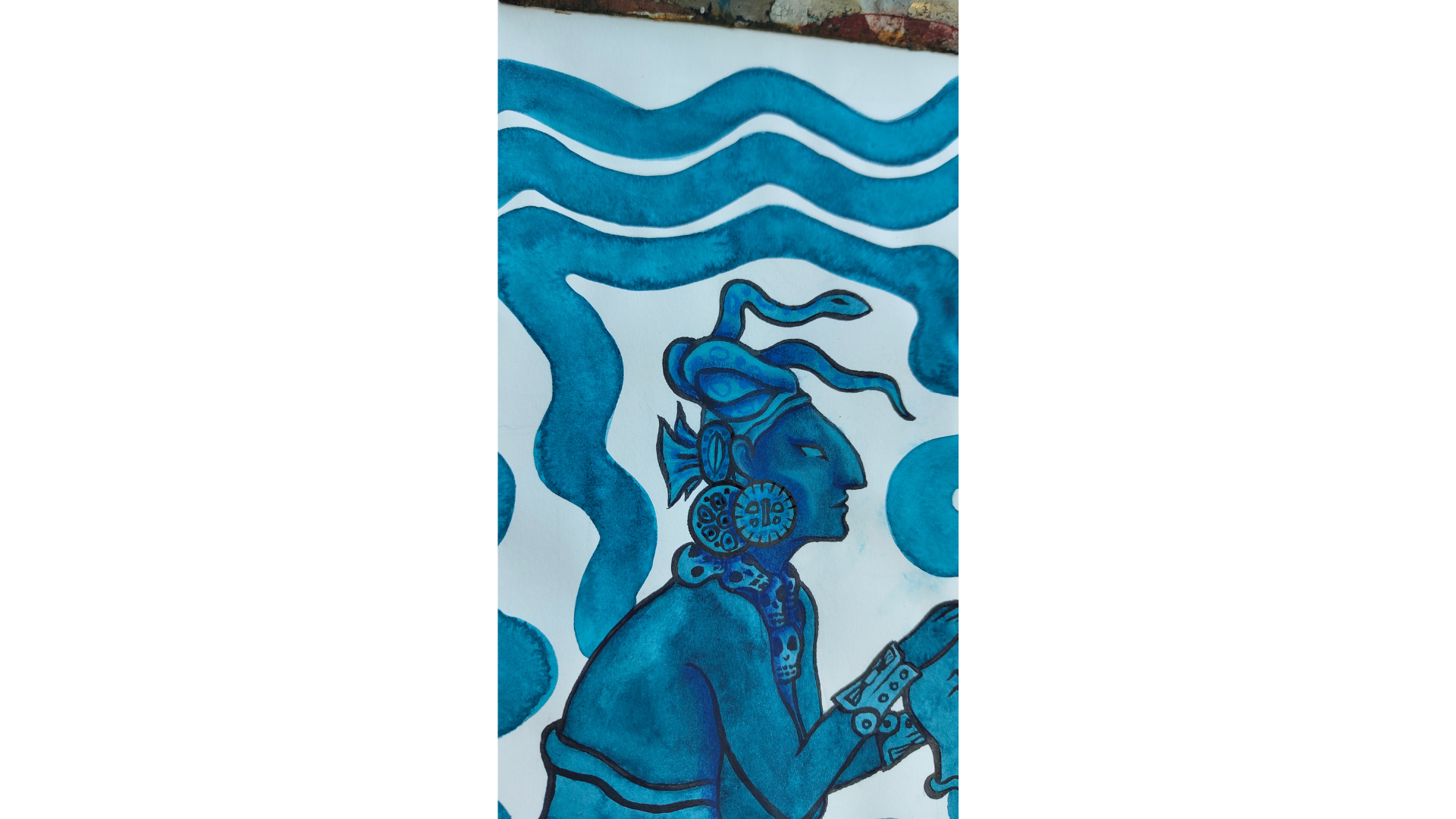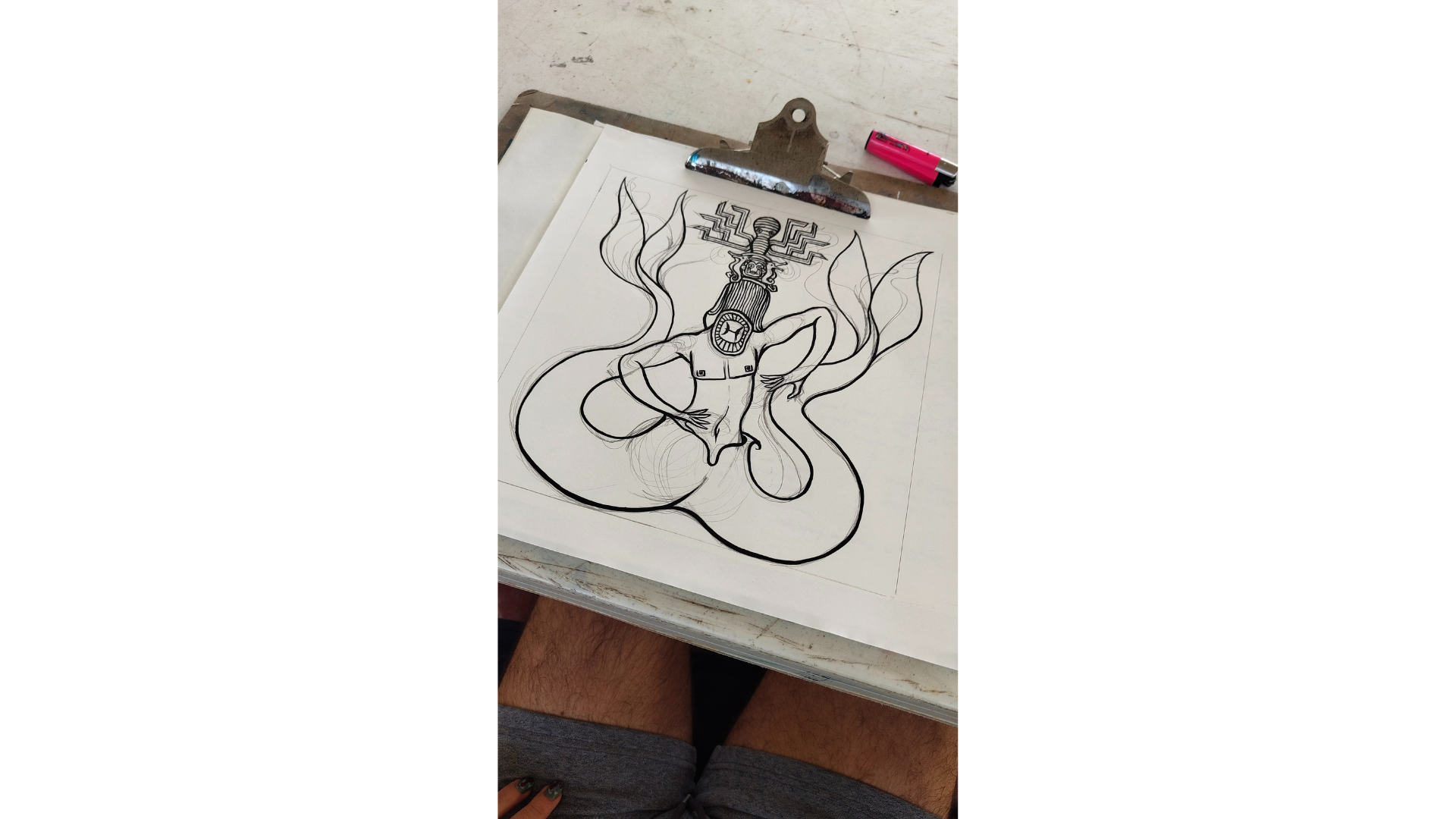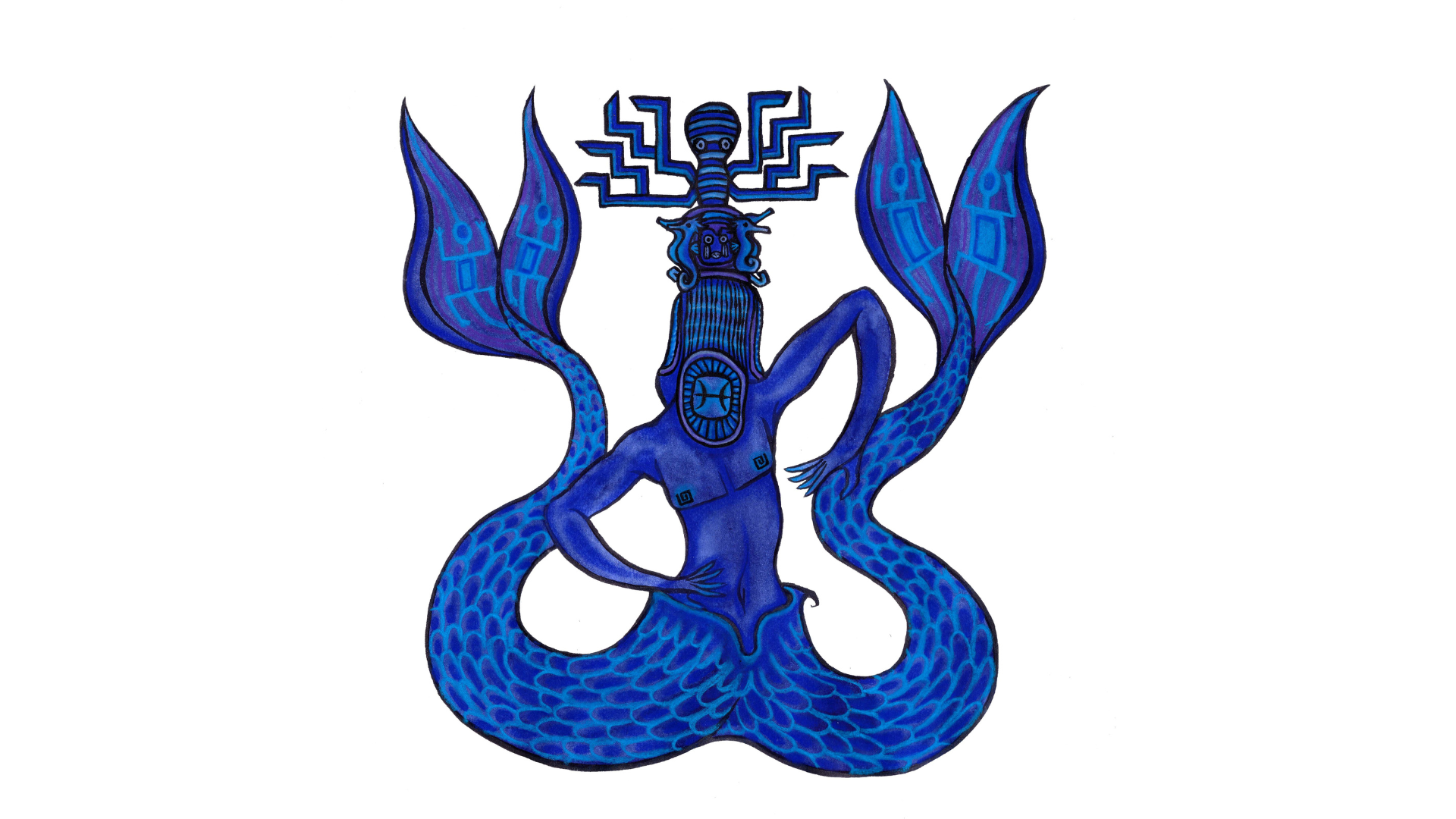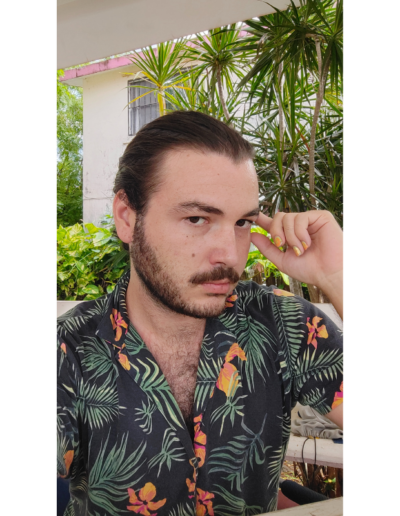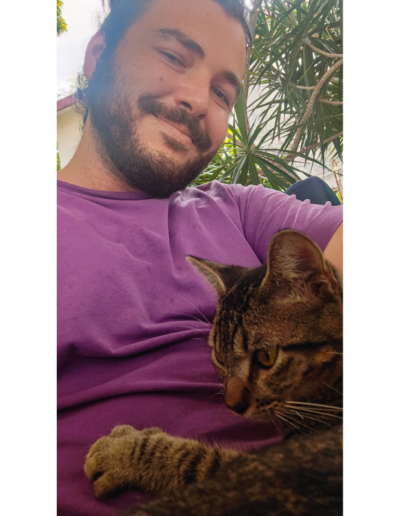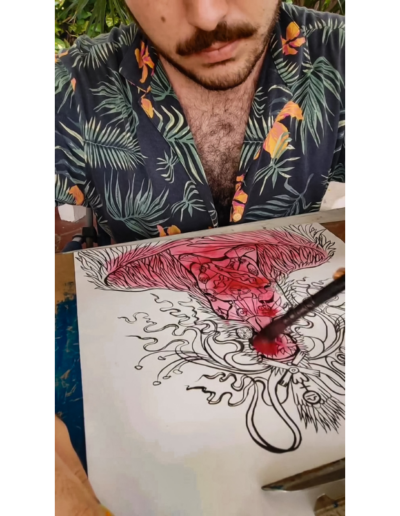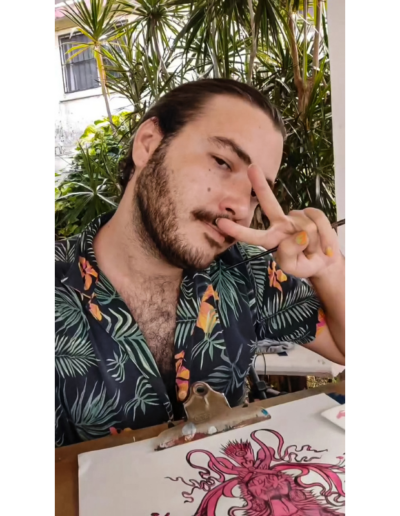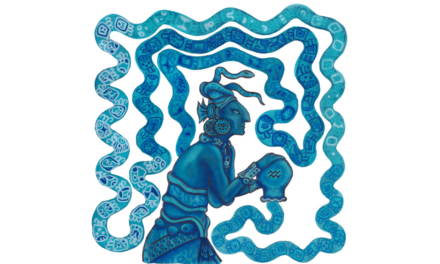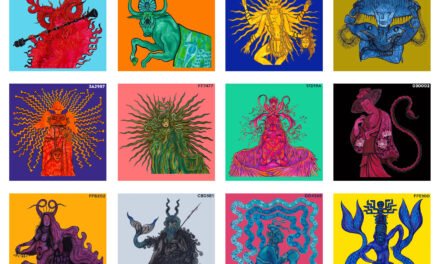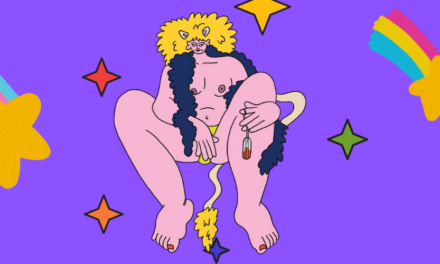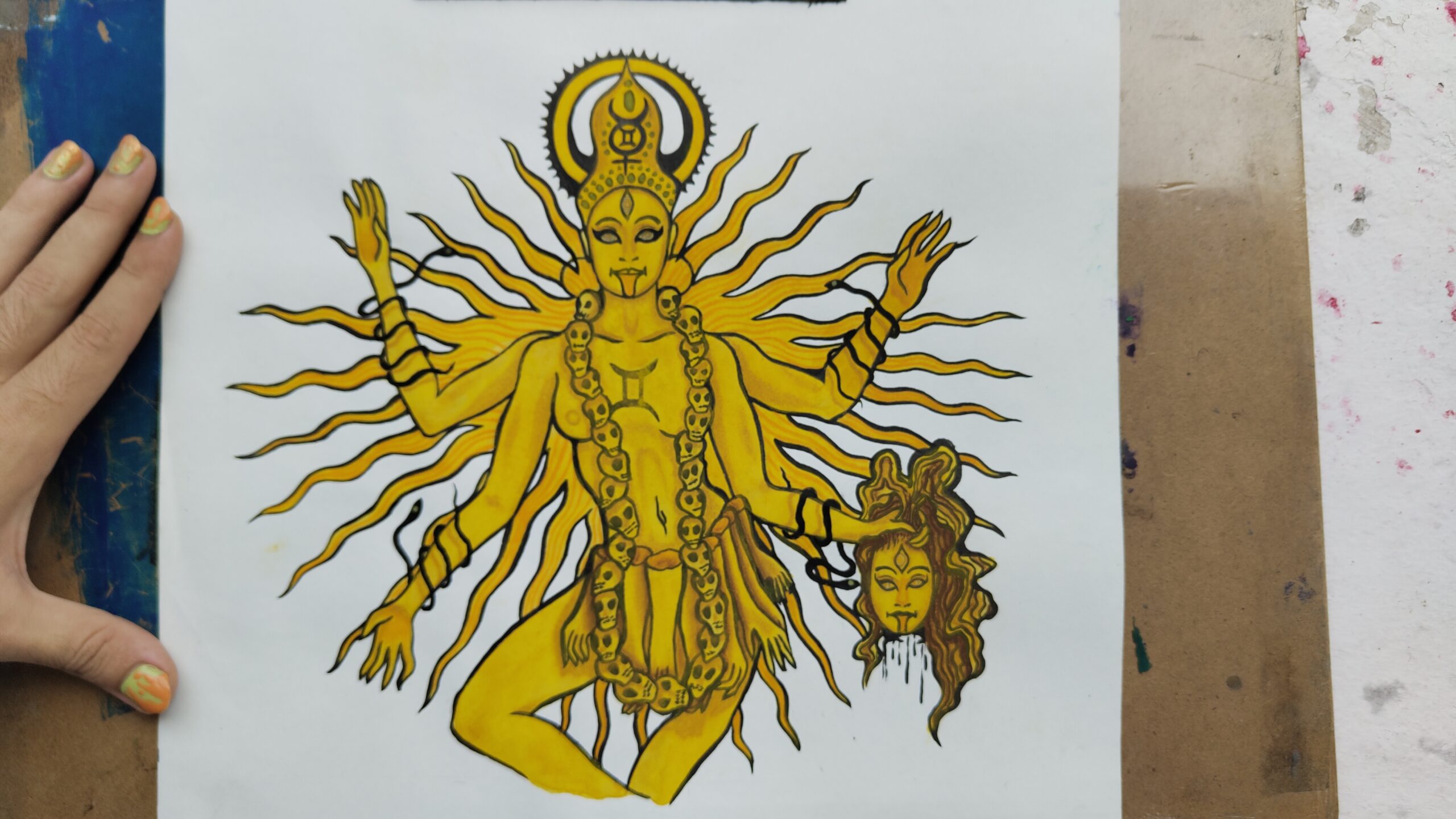
As we bid farewell to Viki Mladenovki’s gorgeous work, we’re excited to unveil the new illustrations that will be featured alongside the “queeroscopes” throughout 2025. They’re the creations of Cuban-born artist Ernesto Testi, whose work has been previously showcased in queer.lu mag, issue 3. Below is an abridged version of an interview we had with him over the new Zodiac illustrations.
Q.L.: Ernesto, you have already contributed illustration work for queer.lu; how far has this specific project been different from the work that you did for issue 3? Were there any specific challenges?
E.T.: The main difference is that, this time, I’ve been working on a subject that interests me and that I specialize in. The main challenge was planning, studying and preparing the structure needed to give life to each sign. Marrying them with mythological beings while keeping all their symbolic references and essence was quite challenging too, that’s why the planning was so important.
Q.L.: Each sign has its very distinctive design, and you appear to have taken inspiration from a great variety of cultures. Could you briefly explain the inspirations behind each one?
E.T.: One of the challenges creating zodiac illustrations for queer.lu was making them “inclusive” while avoiding using modern inclusivity imagery that doesn’t mix well with my artistic universe. I decided to add inclusivity by way of cultural references. Hence, each sign has a “representative” god or mythological being assigned to it, each one from a different culture. And this was a great decision because studying lots of anthropological history and imagery from so many different cultures has been very fulfilling.
I made this reference list before getting started:
Aries – Celtic mythology – Ireland – “Cernunnos”, the god of the forest.
The cute little forest god full of charisma and musical talents perfectly showcases Aries’ youthful and vivacious energy.
Taurus – Egyptian culture – Egypt – “Apis”, the god of fertility and the incarnation of the sun.
Apis is one of the subcategories of Sun gods along with the Scarab and Cobra. They have a very interesting relationship and symbolism. I love this bull because he really looks like a magic animal with humanoid characteristics.
Gemini – Hindu religion – India – “Kali”, the devourer of time and goddess of destruction.
No better way to represent the chaotic energy of Gemini than with the goddess of chaos herself, and she even has 4 arms and multiple heads to match.
Cancer – Japanese mythology – Japan – “Yokai”, humanoid crab of sorrows.
Cry-baby crab but scary as hell, these yokai haunted rivers. The big pincers represent that delicate line between destroying and repairing that cancers do emotionally.
Leo – Inca culture – Peru – “Inti”, the golden god of the sun.
The Incas had the best weaving techniques, they had the best gold jewelry and masks and they made those freaky Nazca lines that can be seen from space, just like Leo’s ego. They were super fashionable and always well-put together just as Leo is always radiant and seeking out the spotlight.
Virgo – Catholic religion – Spain – “La Virgen de Guadalupe” (a product of religious marketing).
I chose to play with catholic symbols for Virgo because it perfectly represents the sick catholic fanaticism that exists in Mexico. Besides, the obsessive and judgmental behavior is typical of Virgo.
Libra – Aztecan culture – Mexico City – “Xochipilli”, the god of flowers, love, and trans women.
An Aztec twink addicted to peyote, tobacco, and ayahuasca, representing the balanced connection between the sky realm and the grounded earth in a trance position. The Aztecs were very homophobic: if a gay couple was discovered having intercourse, they would be killed by law, unless they asked for Xochipilli´s blessing. They then had to decide at that very moment (very Libra) which one of them would be the man, and which would be the woman. From then on, the latter had to dress, act, and live as a woman for the rest of their life. This is how Muxes – and therefore trans women – were born in the Aztec world.
Scorpio – Chinese mythology – China – “Bai Mudan”, the goddess of prostitution and tea.
A prostitute so iconic she became a goddess? You can’t be more Scorpio than that! Showcasing the secretive nature of the Chinese in relation to the mysterious Scorpio.
Sagittarius – Carthaginian culture – North Africa – “Tanit”, the goddess of the moon.
Showcasing a very dark and powerful centaur goddess with symbols linking her to Tanit. The very “syncretic” nature of the goddess is rendered by the fusion of different elements (Lilith, the sacrificial lamb of the apocalypse, etc.) as a visual representation of Sagittarius’ insatiable curiosity.
Capricorn – Viking religion – Sweden – “Njord”, the Nordic god of the sea and abundance.
Njord is usually showcased as a giant god of the sea who brought fish to the Viking people, therefore representing abundance with his fishing spear. Covered by waves and nothing more to represent that hot stuff most Capricorns have.
Aquarius – Mayan culture – Yucatan – “Ixchel”, the goddess of the moon, fertility, and storms.
Ixchel is the Mayan goddess who resided on the same island I live on now, Cozumel. I was raised here, always hearing about her at school and visiting her temples. Thus, I couldn’t find any other mythological being to better represent my zodiac sign. She had a big temple where women would come all the way from the continent to worship her and ask for her blessing to get pregnant. That already is so Aquarius of her, plus she’s always represented as an old lady pouring water out of her vase.
Pisces – Orisha religion – Cuba / Nigeria – “Olokun” the god of the abyss and power.
Of course, I couldn’t finish without adding a reference to my beloved Afro-Cuban roots and folklore with Olokun, one of my favorite Orishas. He is the only hermaphrodite god amongst them, depicted as a very powerful double-tailed merman who wields the power of the abyss.
He is wearing a traditional Yoruba crown made of glass beads, that also represent the mystique and magic powers that Pisces have.
Q.L.: What is the meaning behind the different colors?
E.T.: The study of color is one of the things that I love the most, thus I’m very sensitive to it and it has always been front and center in my art. The first time I worked on zodiacs, four years ago, I focused on doing a color study of the signs to identify their representative color. There’s multiple factors that decide the color used for each sign, the main one being their element, then the type of sign, their energy, and age.
1 – Aries – SCARLET RED – young fire
2 – Taurus – COPPER TEAL – earth with water characteristics
3 – Gemini – CADMIUM YELLOW – chaotic wind
4 – Cancer – COBALT BLUE – depressive blues
5 – Leo – ORANGE – Egocentric orange
6 – Virgo – OLIVE GREEN – she doesn’t want to stand out
7 – Libra – MAGENTA – Alure and sympathy
8 – Scorpio – CRIMSON RED – rojo putón, rojo pasión, fiery water sign
9 – Sagittarius – VIOLET – wise purple
10 – Capricorn – BLACK – serious money
11 – Aquarius – PHTHALO TURQUOISE – windy waters
12 – Pisces – SPACIAL BLUE – magic fish
Each sign corresponds to a stage in human life, starting with Aries as the youngest sign representing the baby, and ending with Pisces as the oldest, representing the out-of-body experience our soul goes through at death, the final stage. Divided into 3 groups of 4 signs, each group contains the same order of elements (Fire, Earth, Wind, and Water) repeated each time.
For the first group representing the early stages of life, all four colors are on the bright side. It’s the only time that there’s a perfect elemental balance, with Red, Green, Yellow, and Blue, like the RGB basic color combinations. This relates to the bright, playful, and energetic force of the early stages in life.
The second group represents the middle stages in life, often associated with sexual maturity. We have the biggest concentration of warm and reddish colors since this group is all about passion. Virgo is the exception, having a cold color with warm tones. The color scheme is Orange, Olive Green, Magenta, and Crimson Red. I like to think of this interval of green right after orange as a moment of rational introspection about our relationships, before going back to red and more intense and heart-wrecking experiences – a moment of clarity before chaos.
For the third and final group representing the last stages in life, the color scheme turns dark and blue, having very opaque colors, as if to indicate that life could turn a bit gloomy by then. These elders are full of knowledge and are going through the process of ascension which represents the preponderance of blueish colors. The color scheme is Violet, Black, Turquoise, and Purple Blue.
Q.L.: Could you briefly explain the artistic process behind your work?
E.T.: I’m an obsessive overthinker and I try to make use of this most of the time. First, I draw a concept in my mind and then, when I’m satisfied, I either do a sketch on bad paper or go directly for the jugular and just paint it on the final canvas. In my head, everything works like a mental map of interconnected ideas.
I start with a pencil sketch, then ink linework using a brush. I erase the pencil markings, then add a watercolor wash of a single prepared color, and as soon as it’s dry, the final and longest step: adding details, light, shadow, and textures using dry pastel pencils on top of the watercolor. Sometimes the pastels make the black linework very light and diffused so I have to redo the linework to fix the opacity of the black lines. That would be the entire process, and it takes one or two days.
Q.L.: On a more personal note: was there anything you particularly liked or disliked about this project? Which illustration is your favorite?
E.T.: I didn’t dislike a single thing! I would only confess that it was a heavy month for me, planning and making these 12 illustrations using traditional techniques was really a fun, wild ride. It was a joy to study, learn, and share so much about history, culture, and symbolism.
My favorites would be the Mercury sisters, Gemini and Virgo. The first time I did this I was very disappointed with my Virgo drawing, so doing this again 4 years later, I have to say that I am quite satisfied with how it turned out.
As for Gemini, I’ve been wanting to work with Hindu references for so long and it was super fun to be finally able to do so.
Q.L.: Any thoughts on horoscopes and queer culture?
E.T.: Queers tend to gravitate towards astrology at least once in their lifetimes. In my case, I was raised in a generation of Latinos that grew up with Walter Mercado, a very cool, charming and queer TV astrologer. I think every country had its own Walter, somehow. Entire generations have been raised by queer astronomers, fortune tellers and mediums. That’s why Astrology echoes with many queers, serving for some as a coping mechanism or a safety mat in the tough world out there. Just don’t over-rely on it!
Q.L.: Thank you for your time!
Please visit the artist’s Instagram @visual_testi for more details on each illustration.

